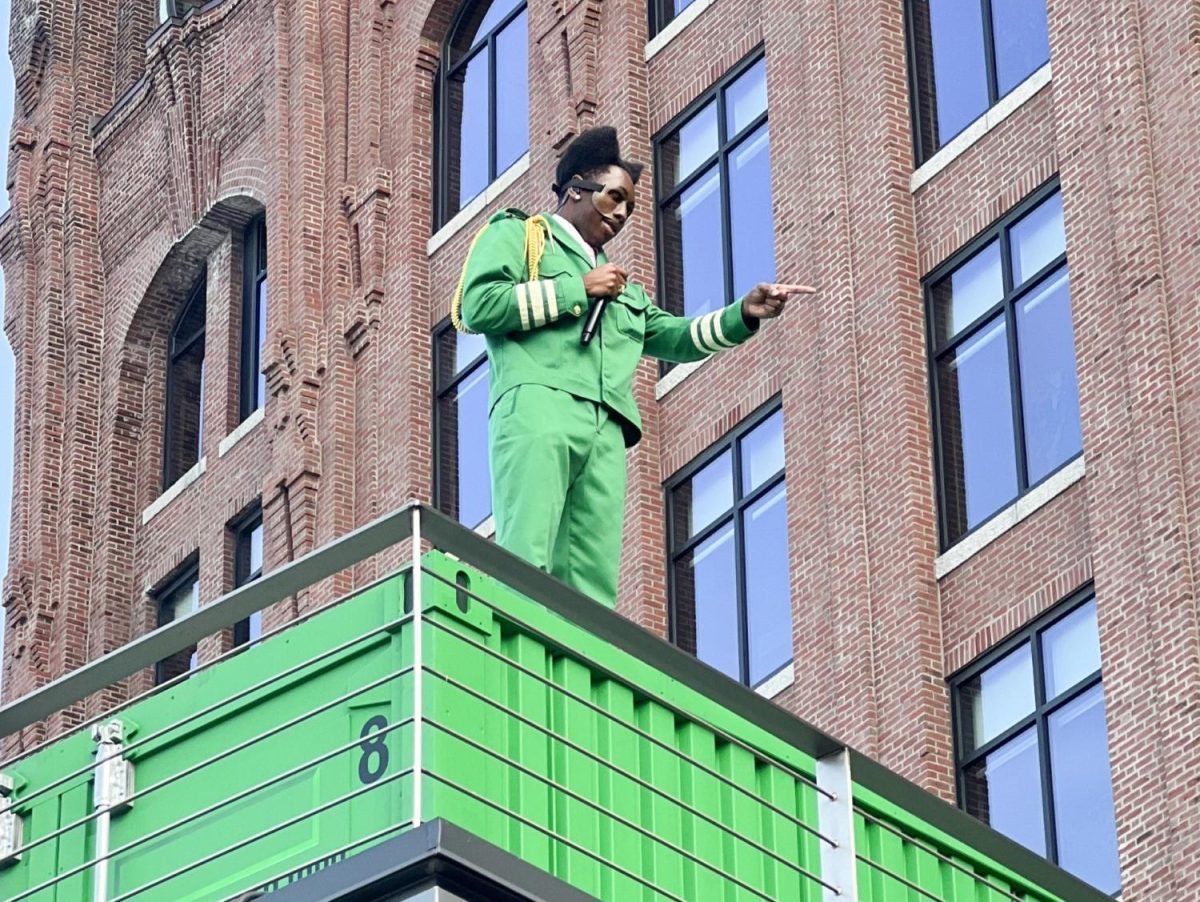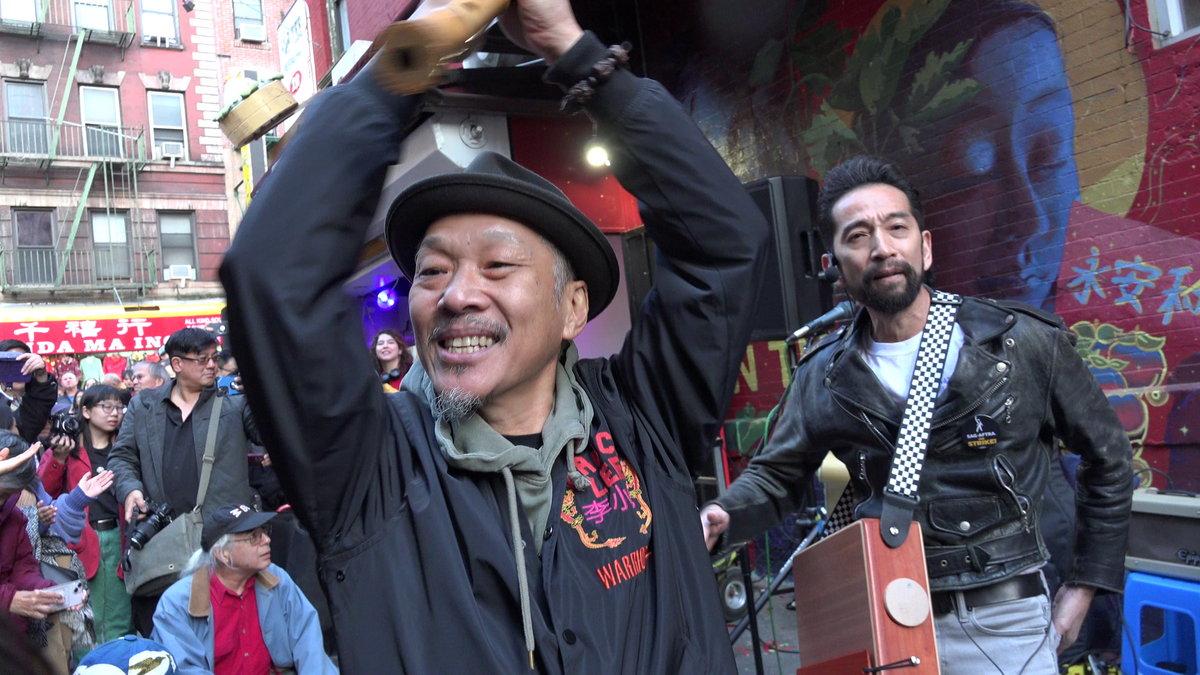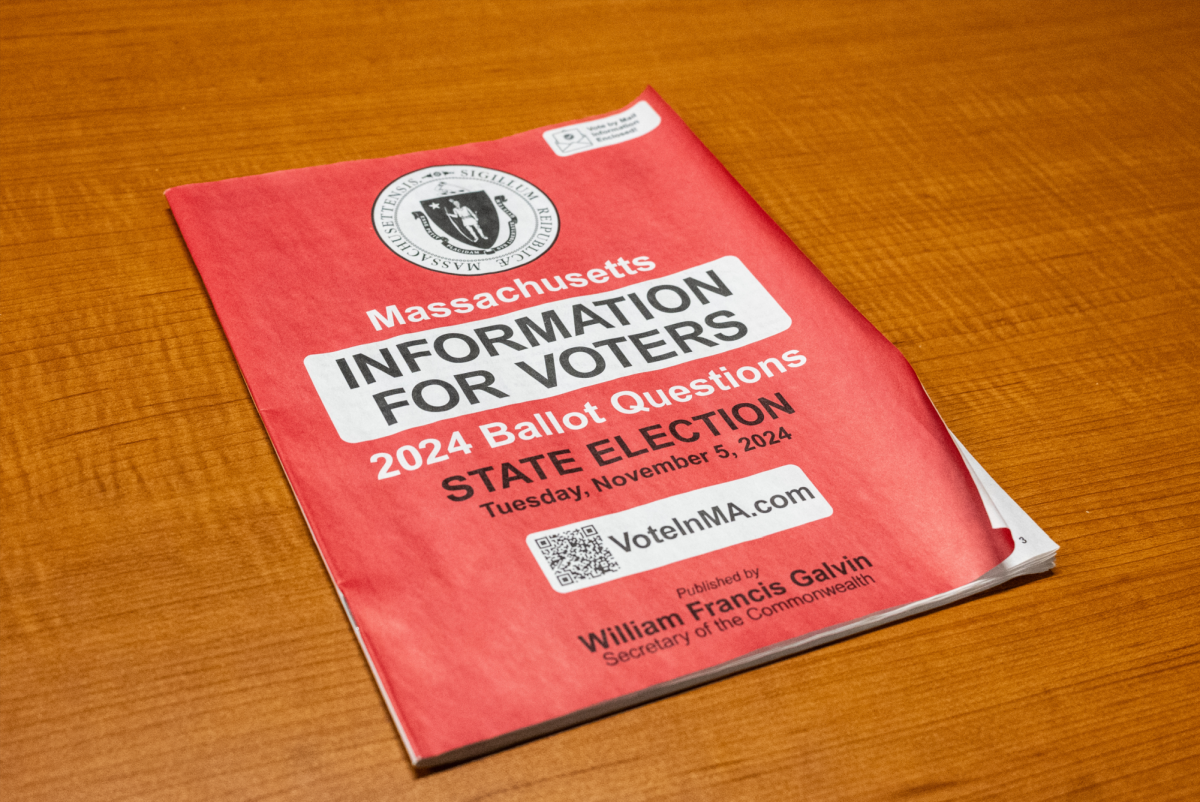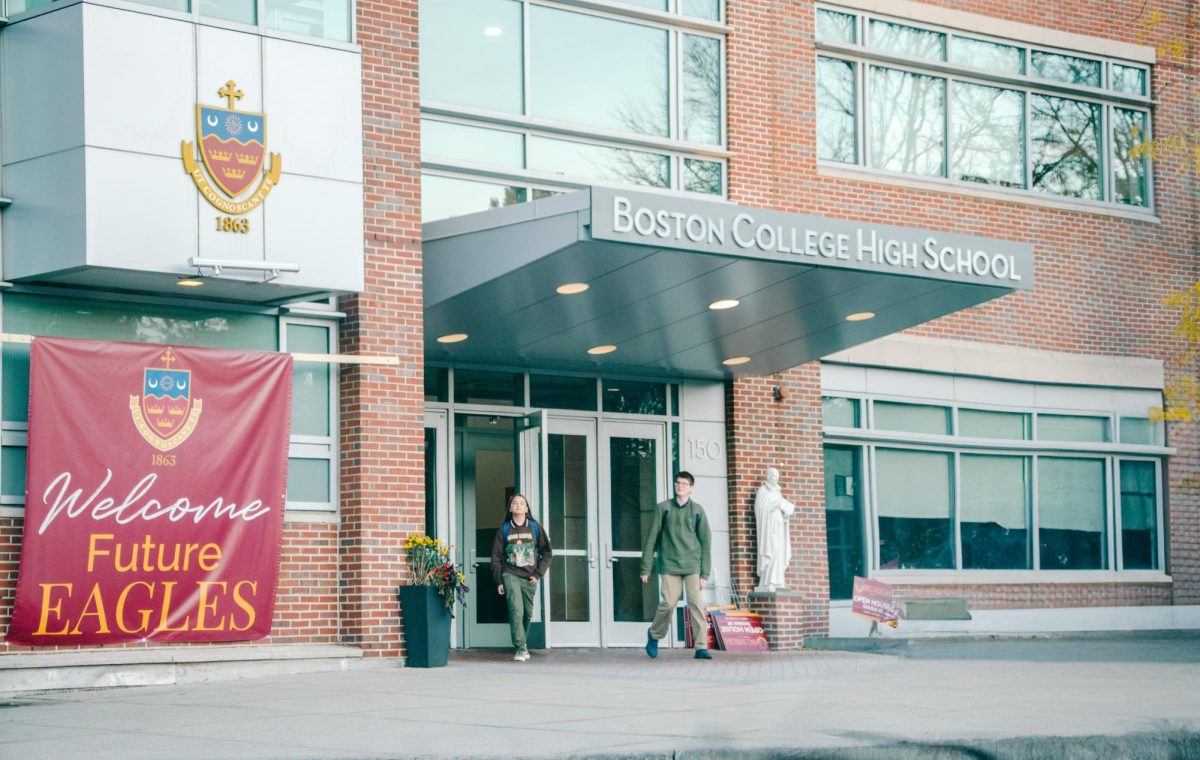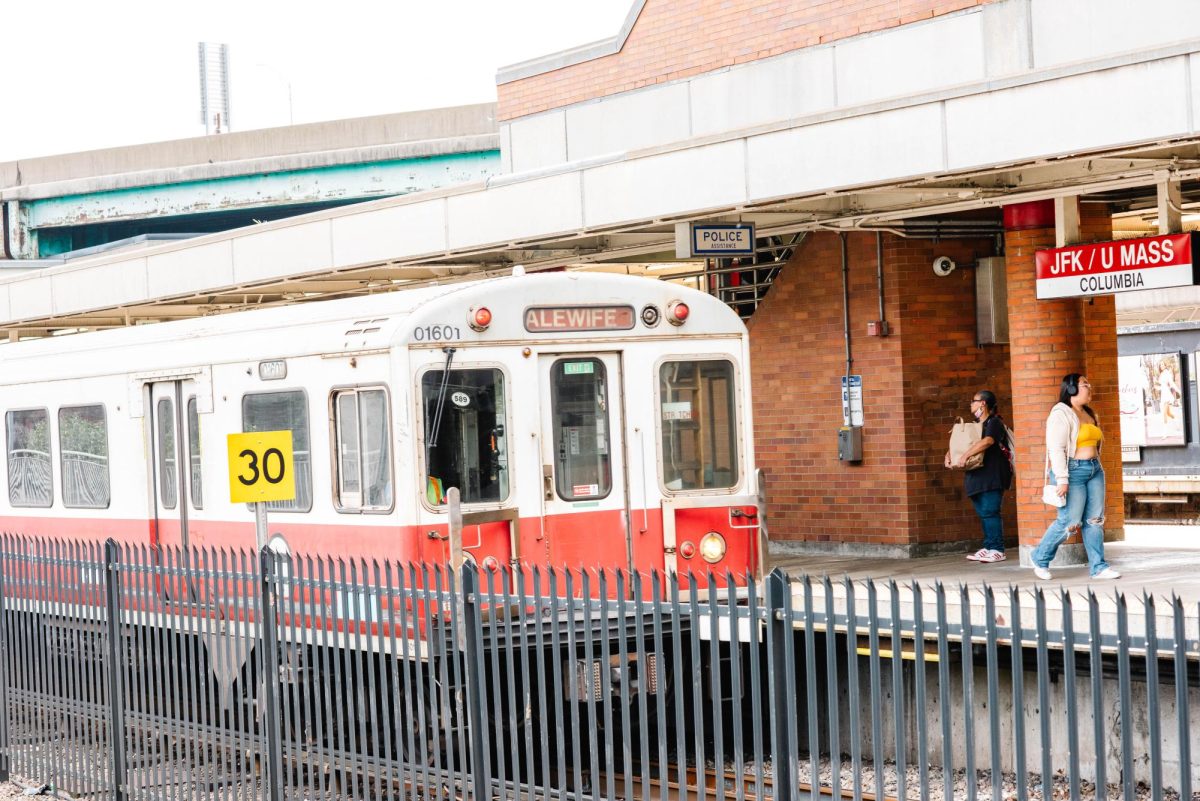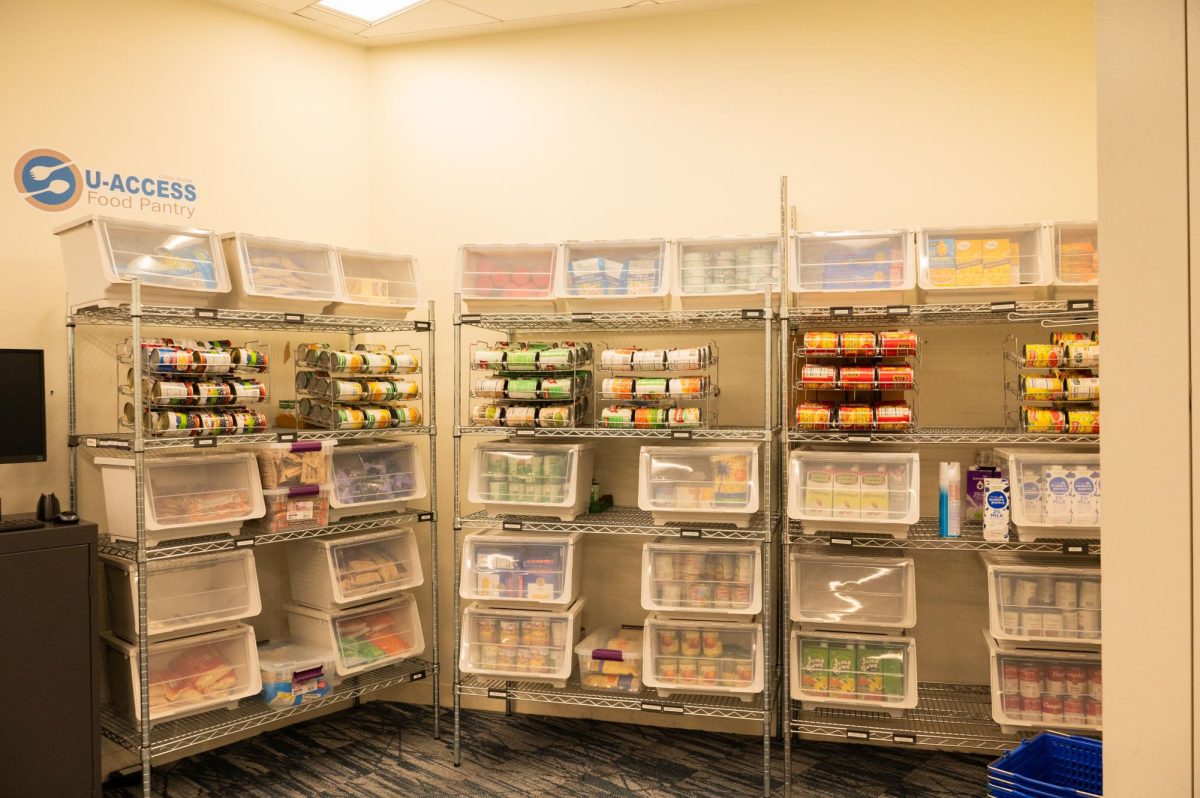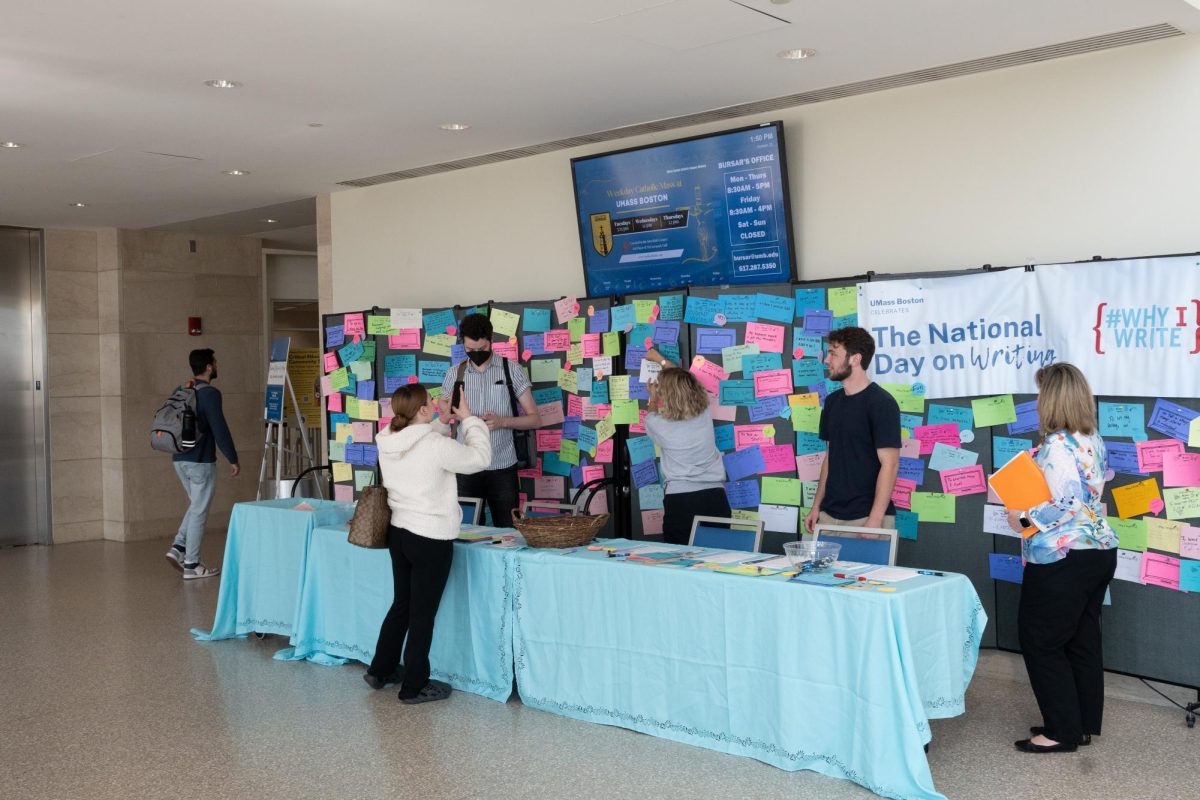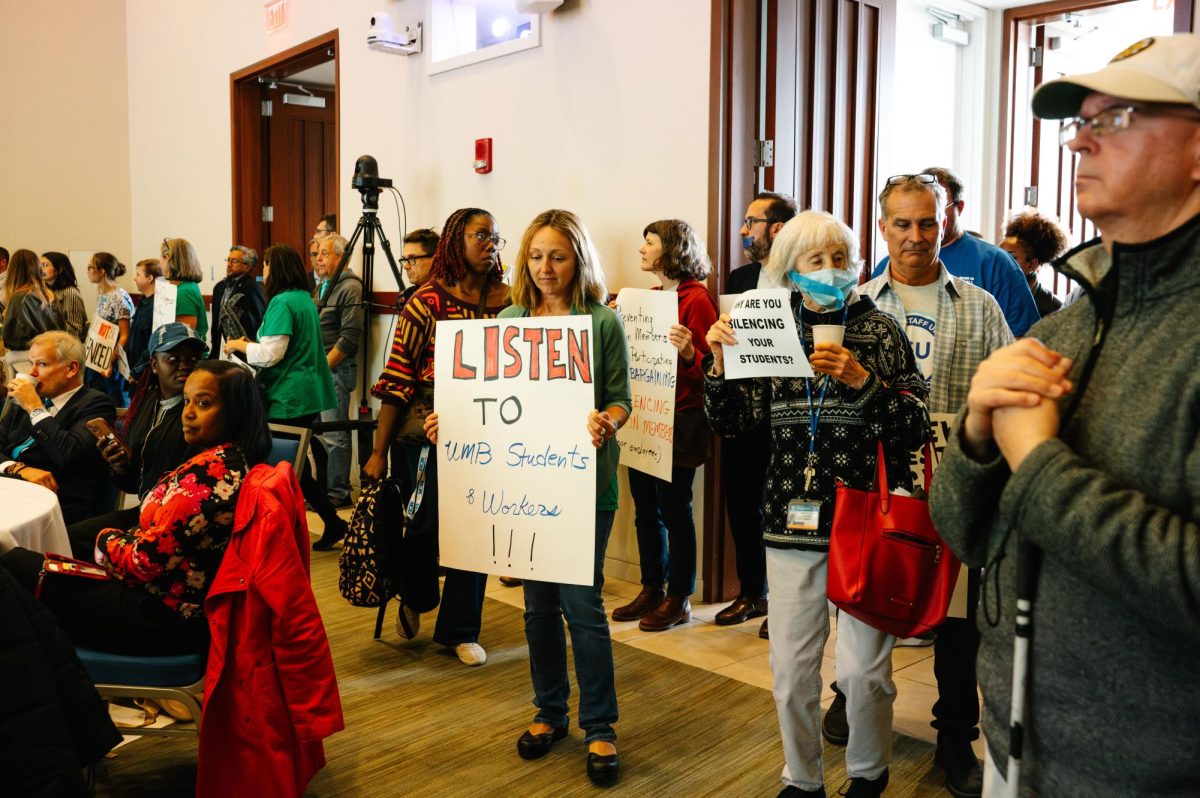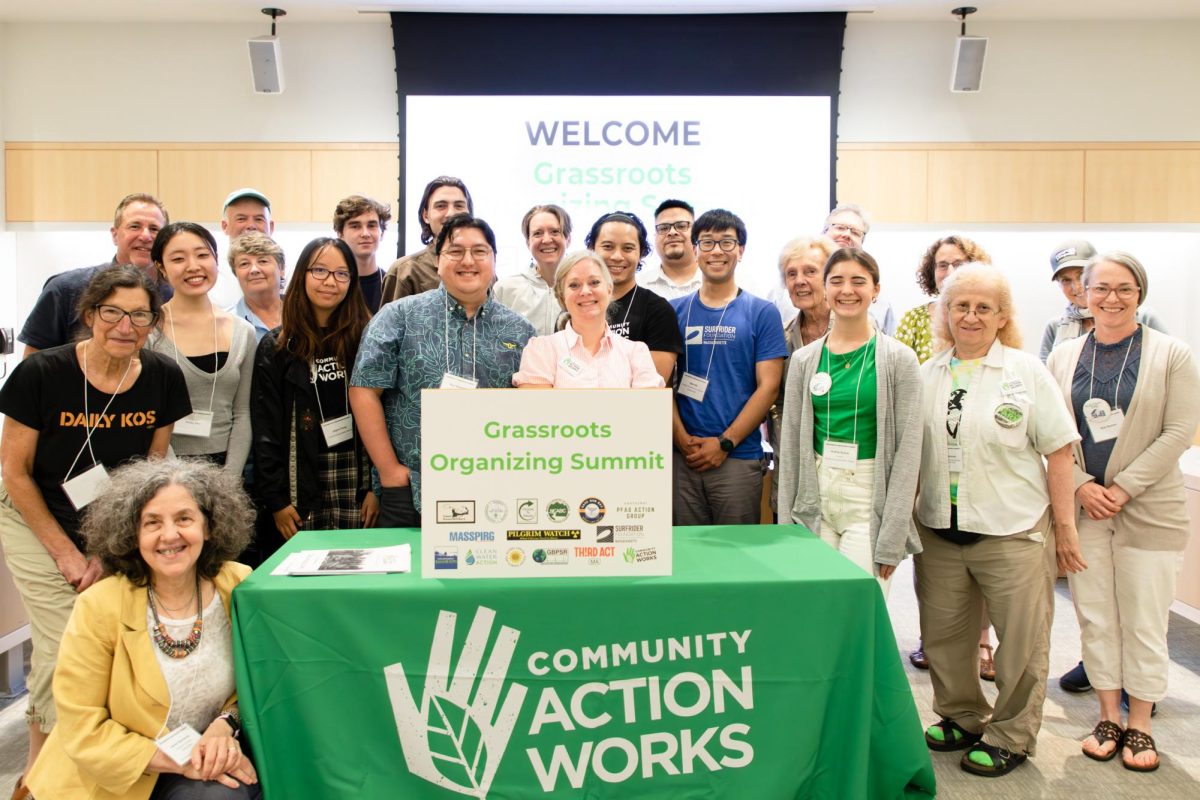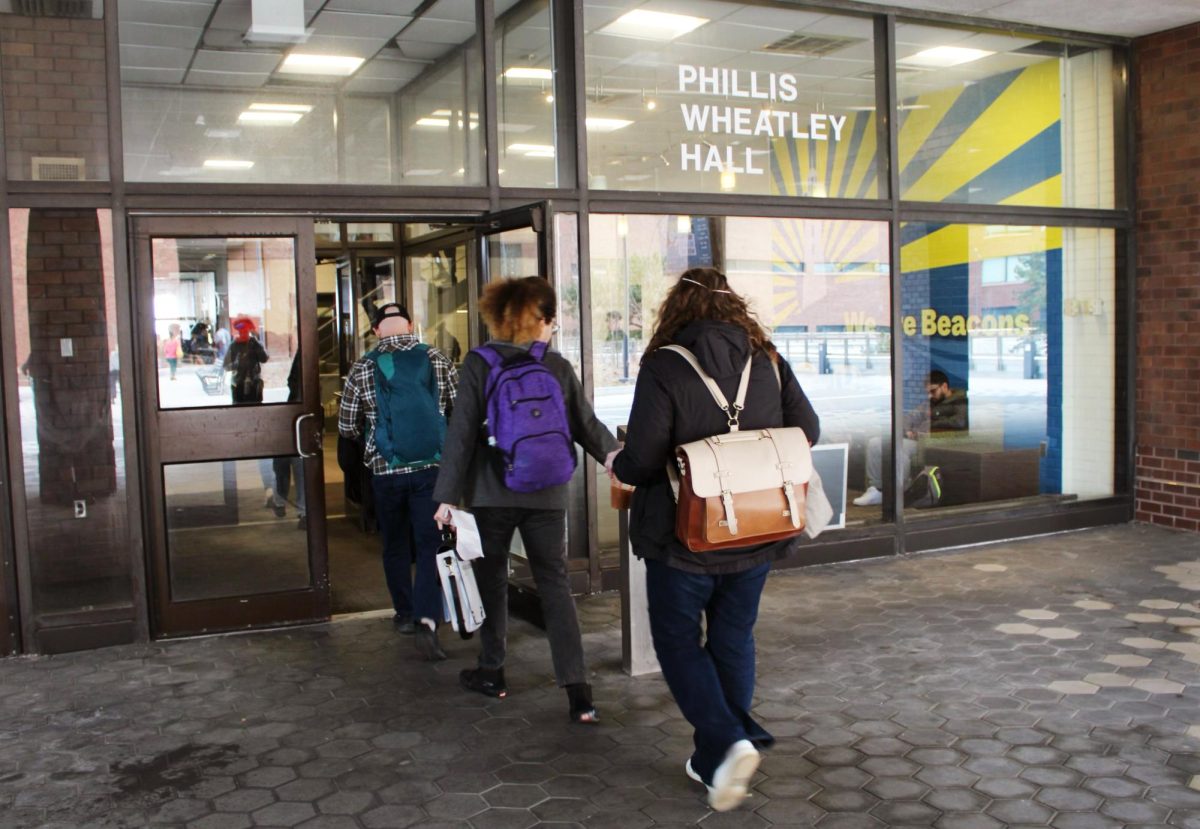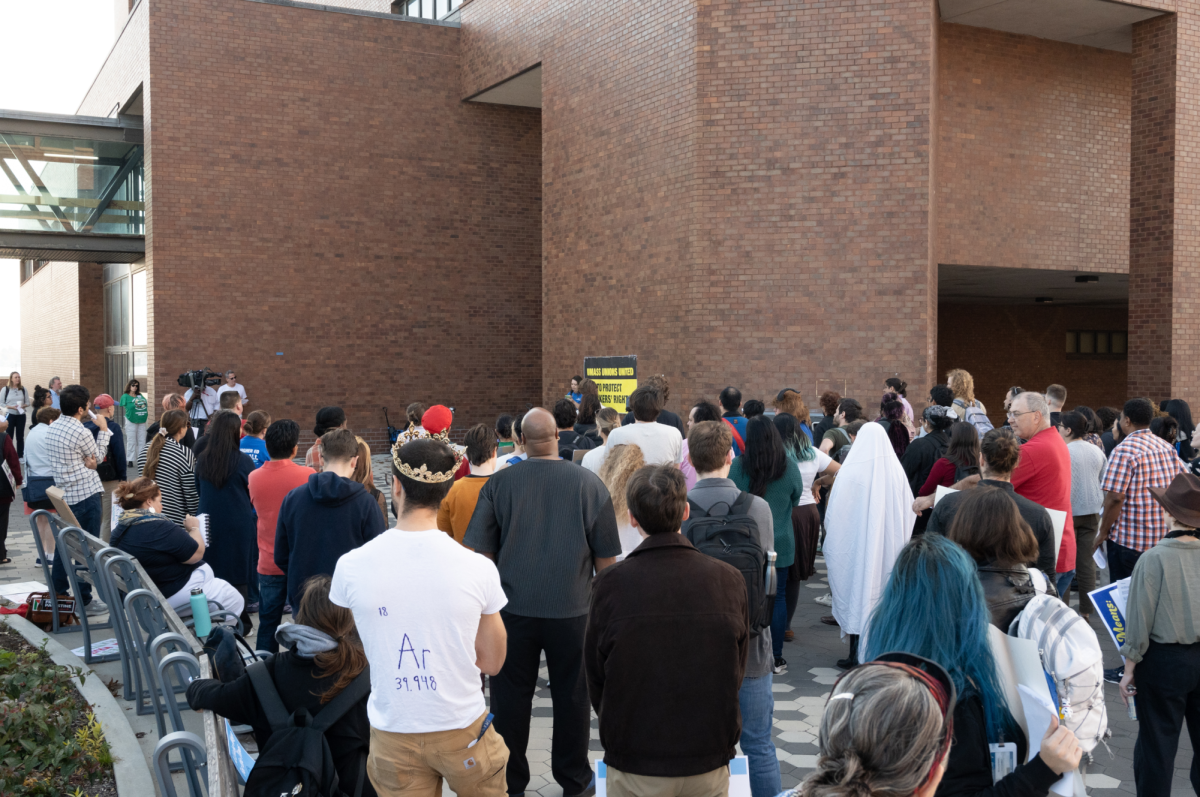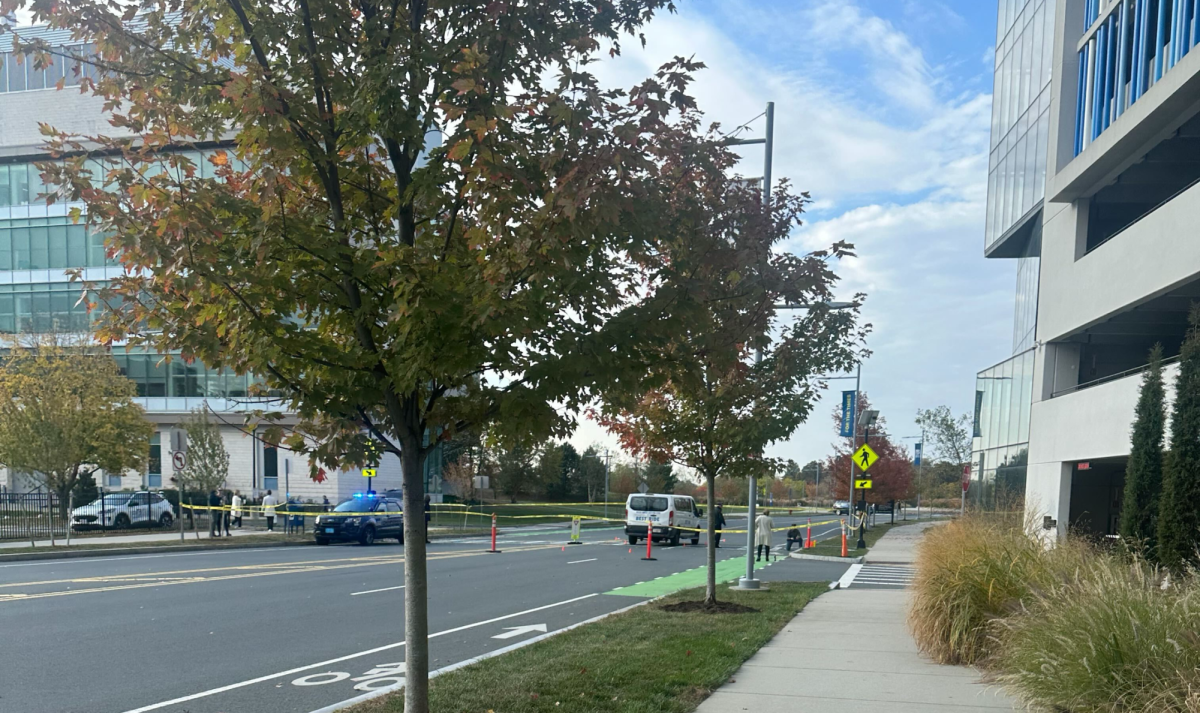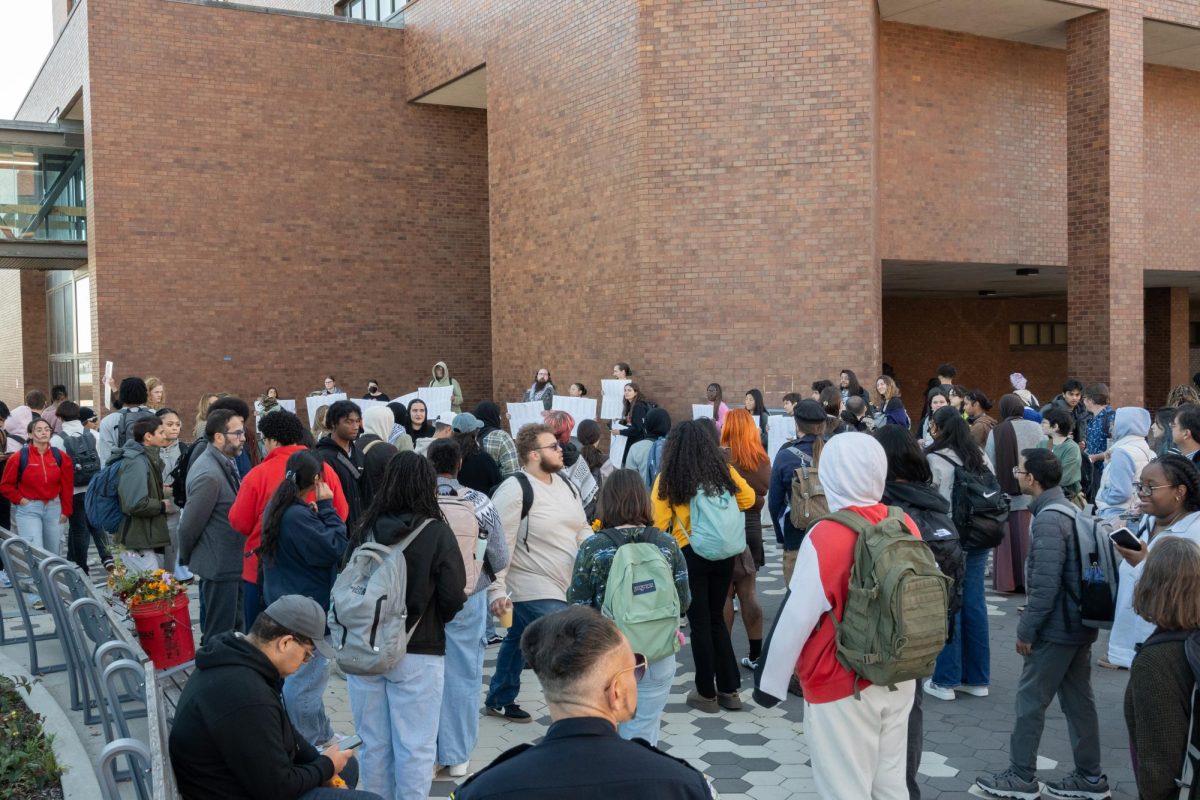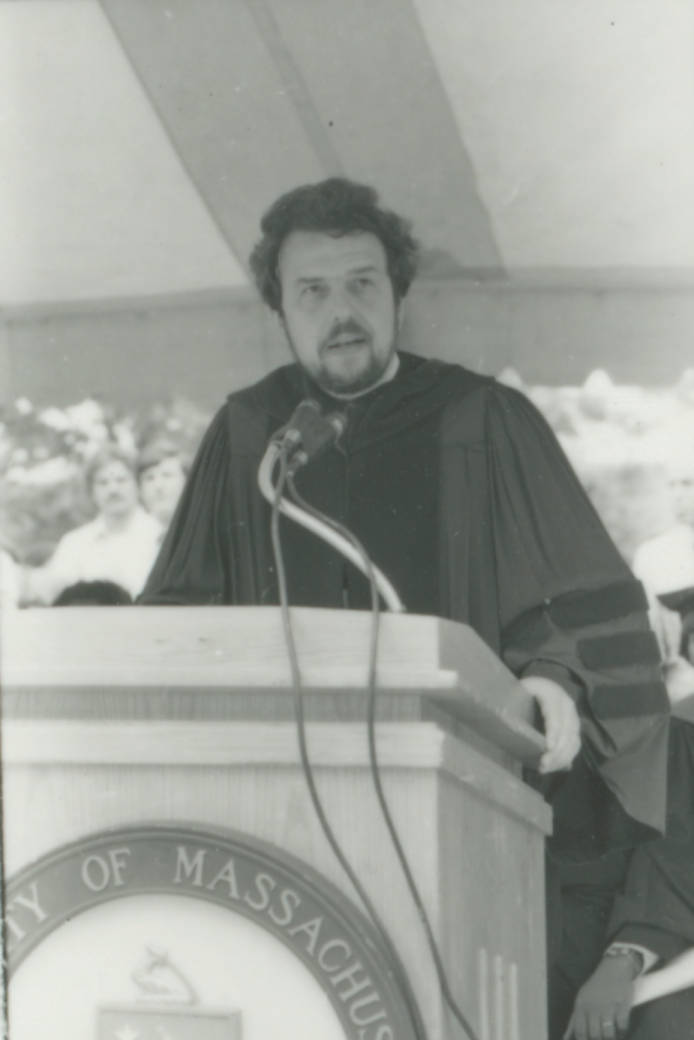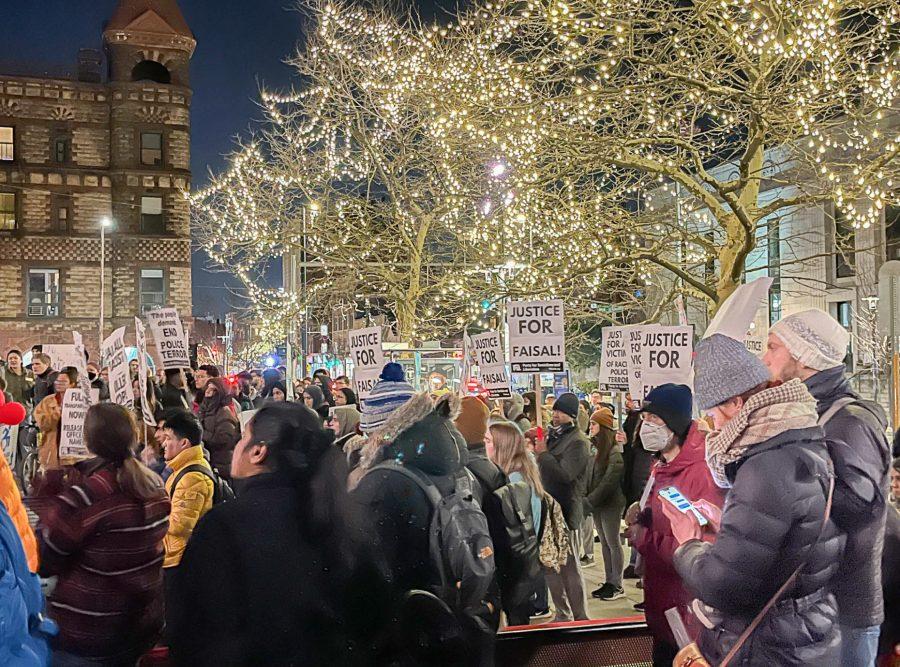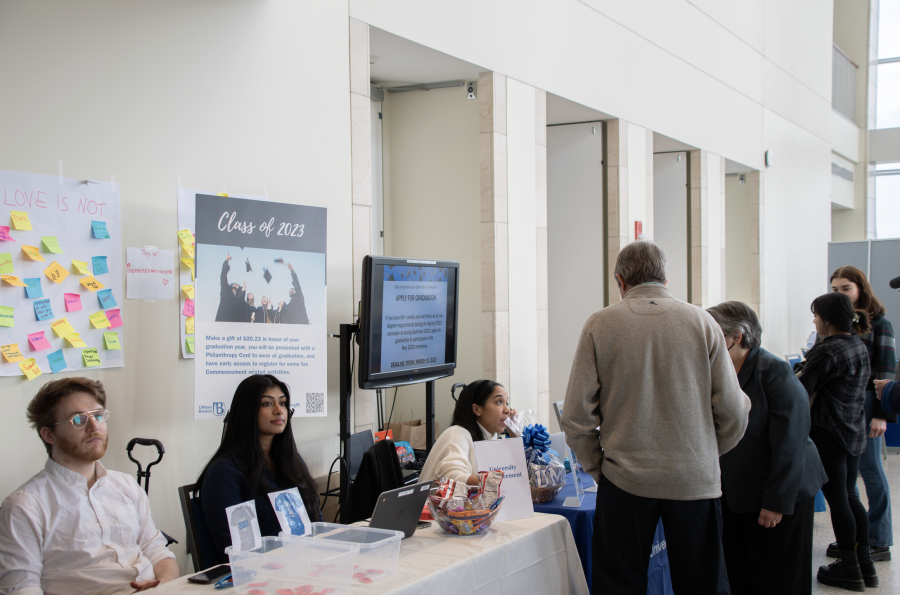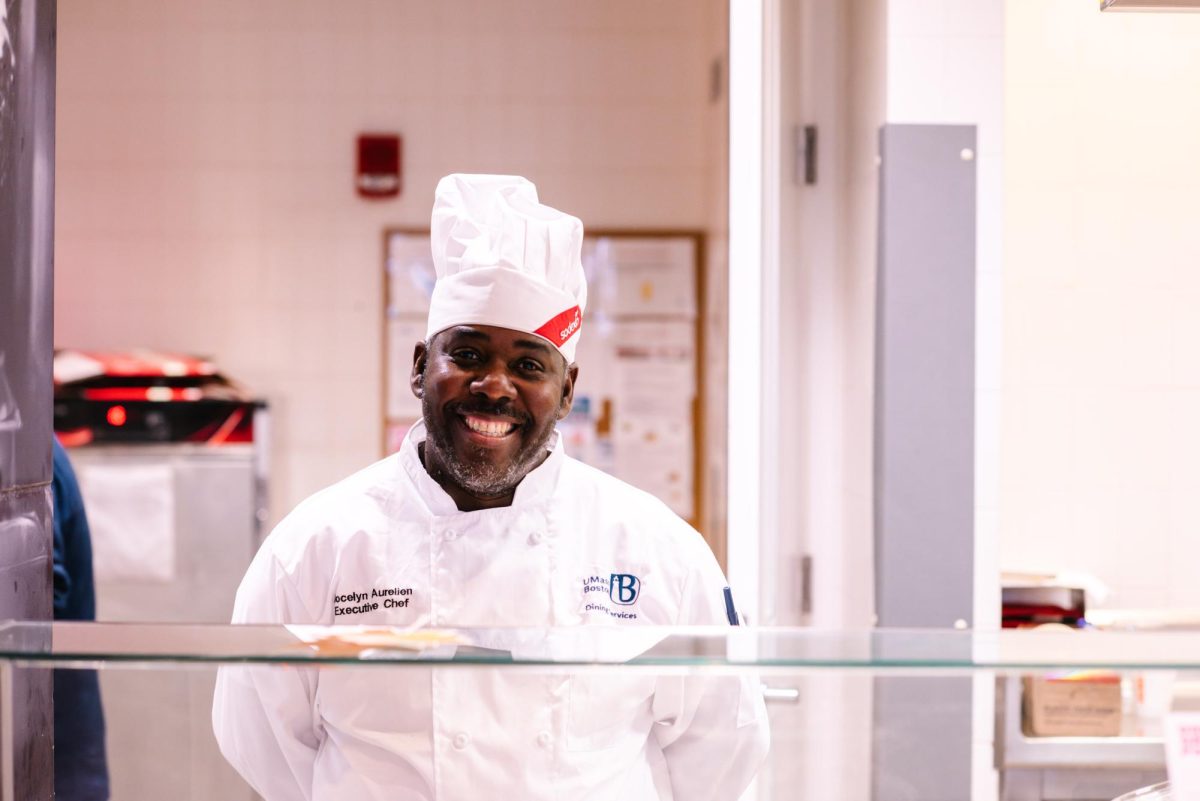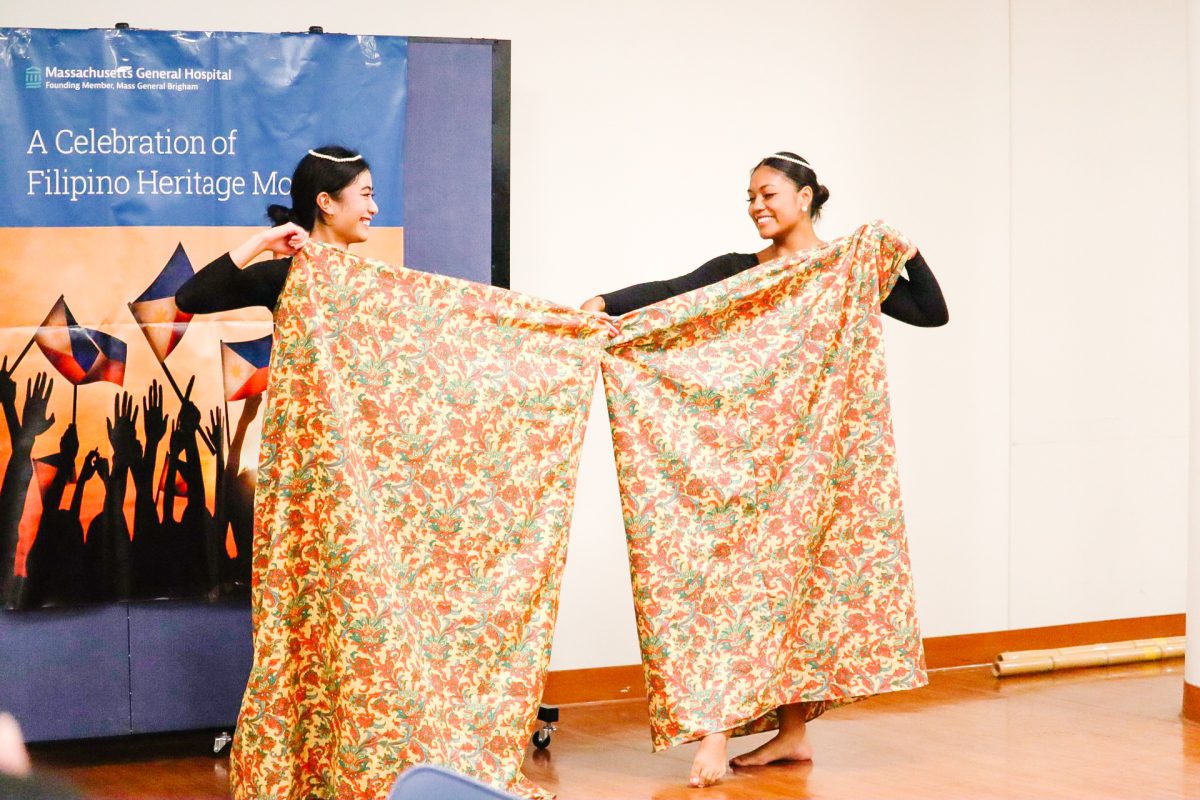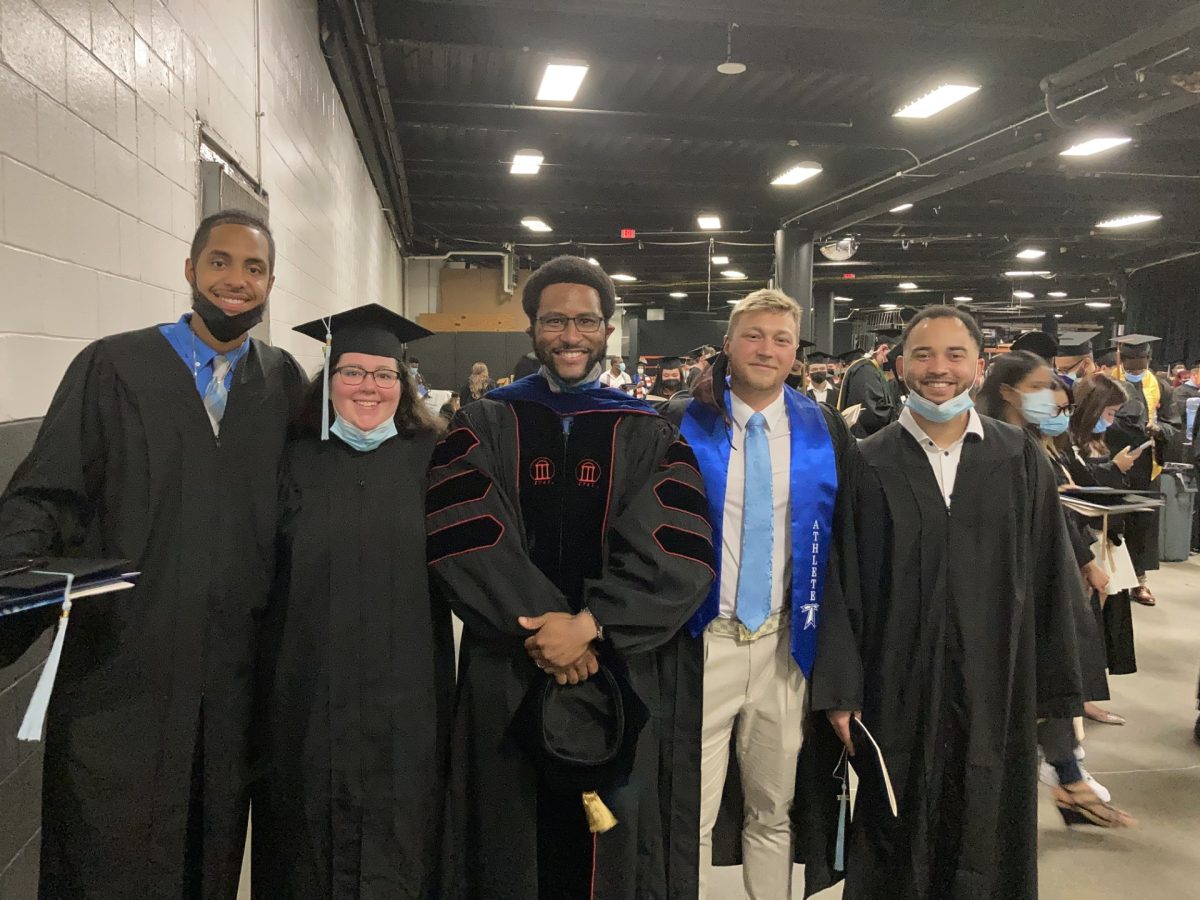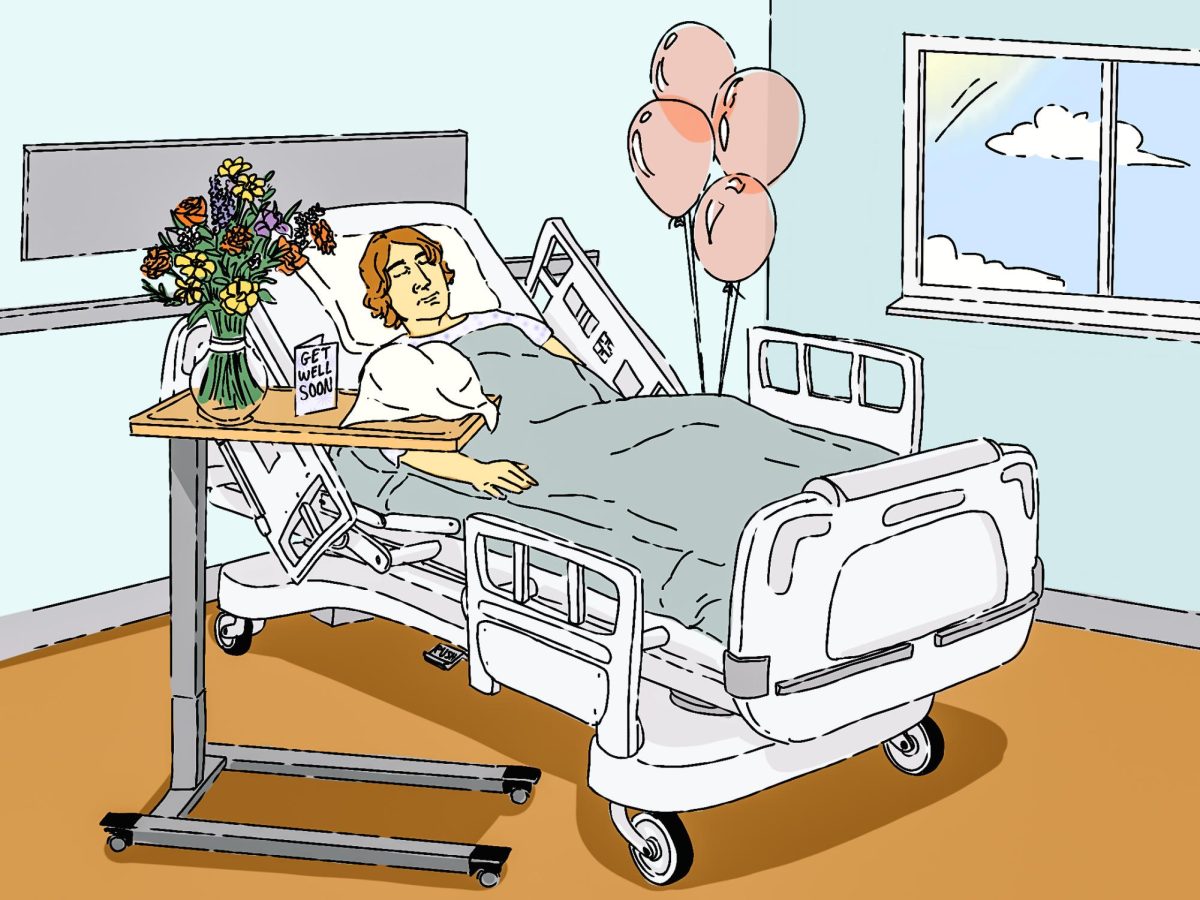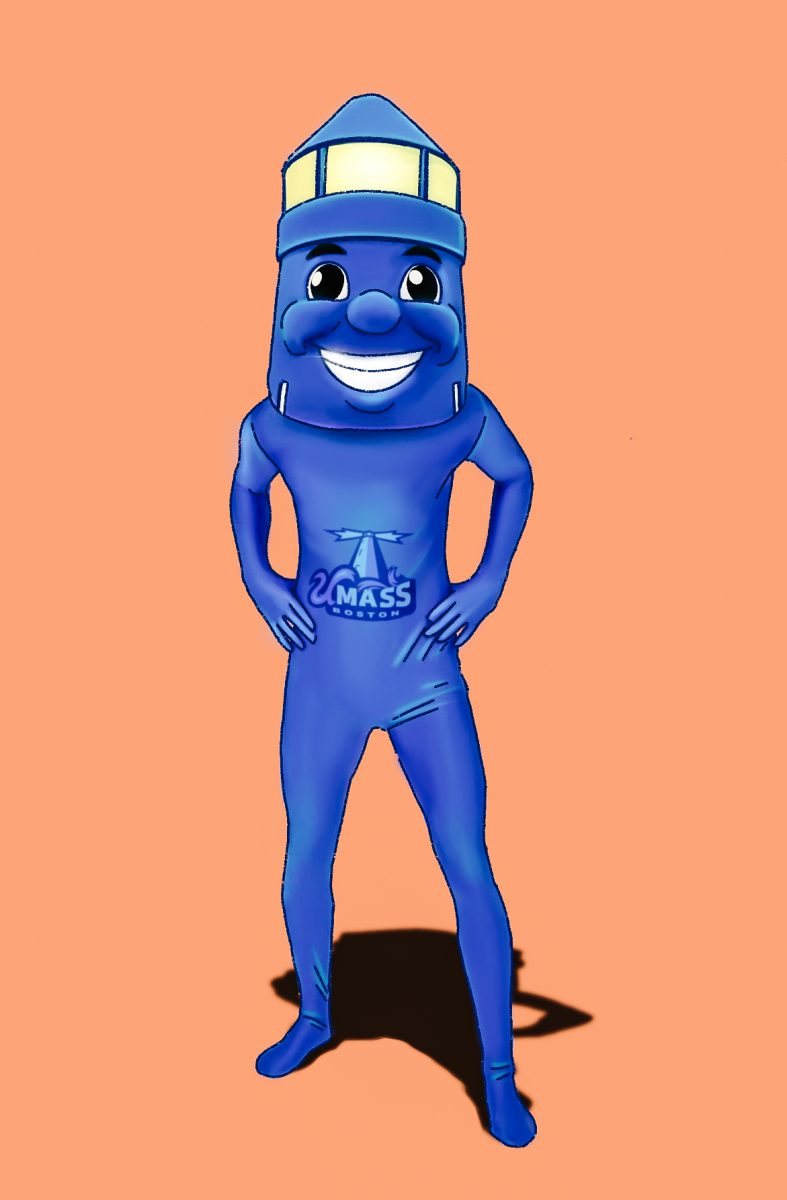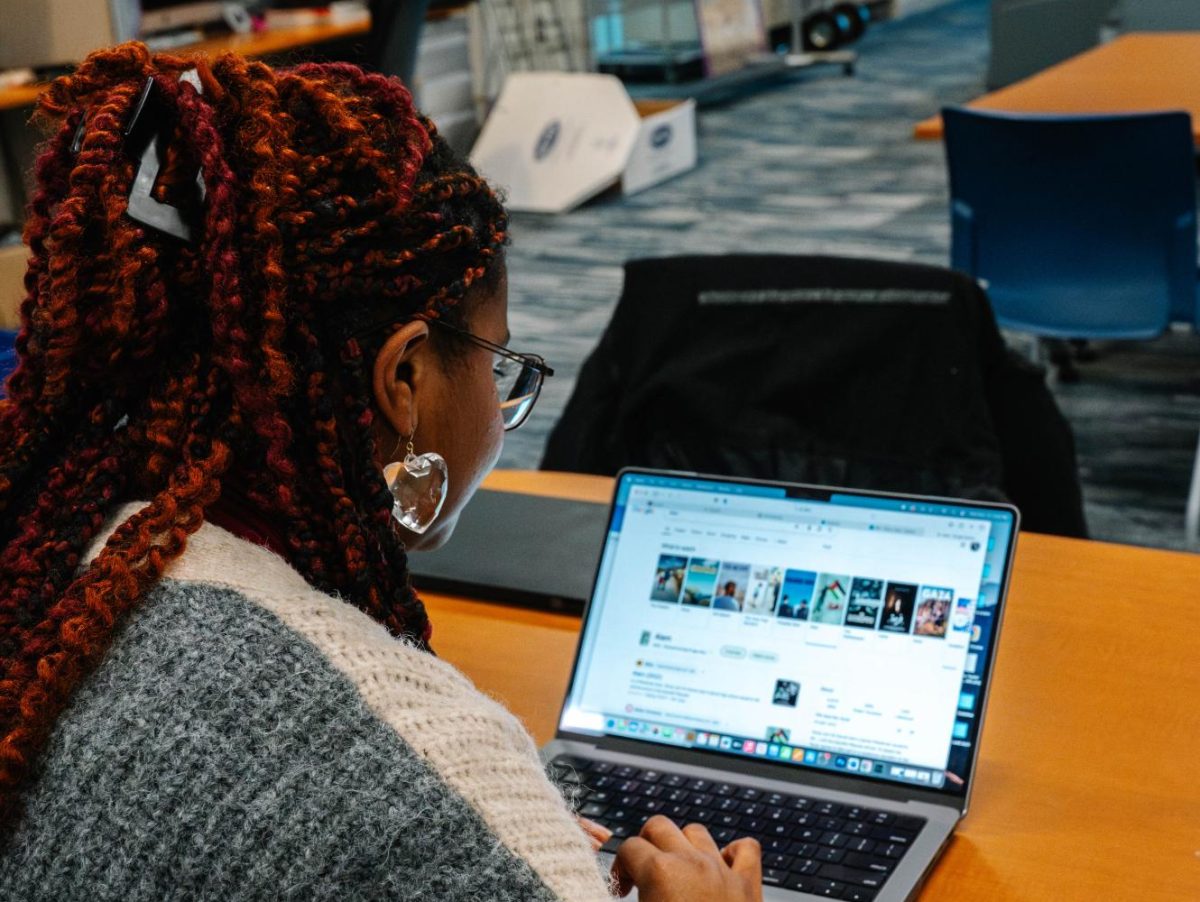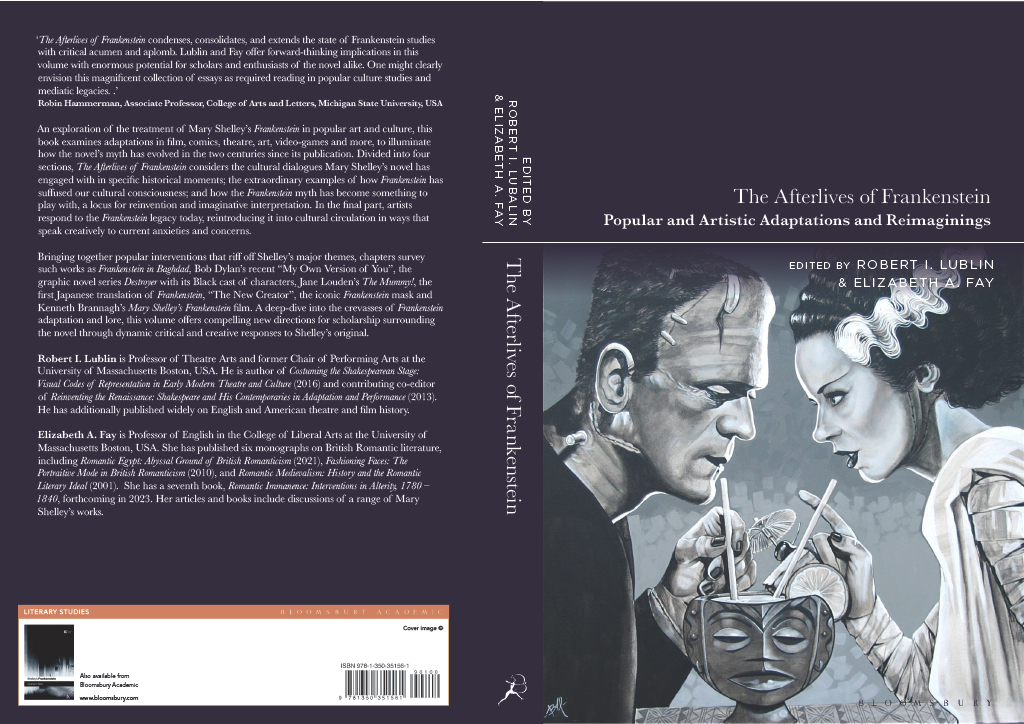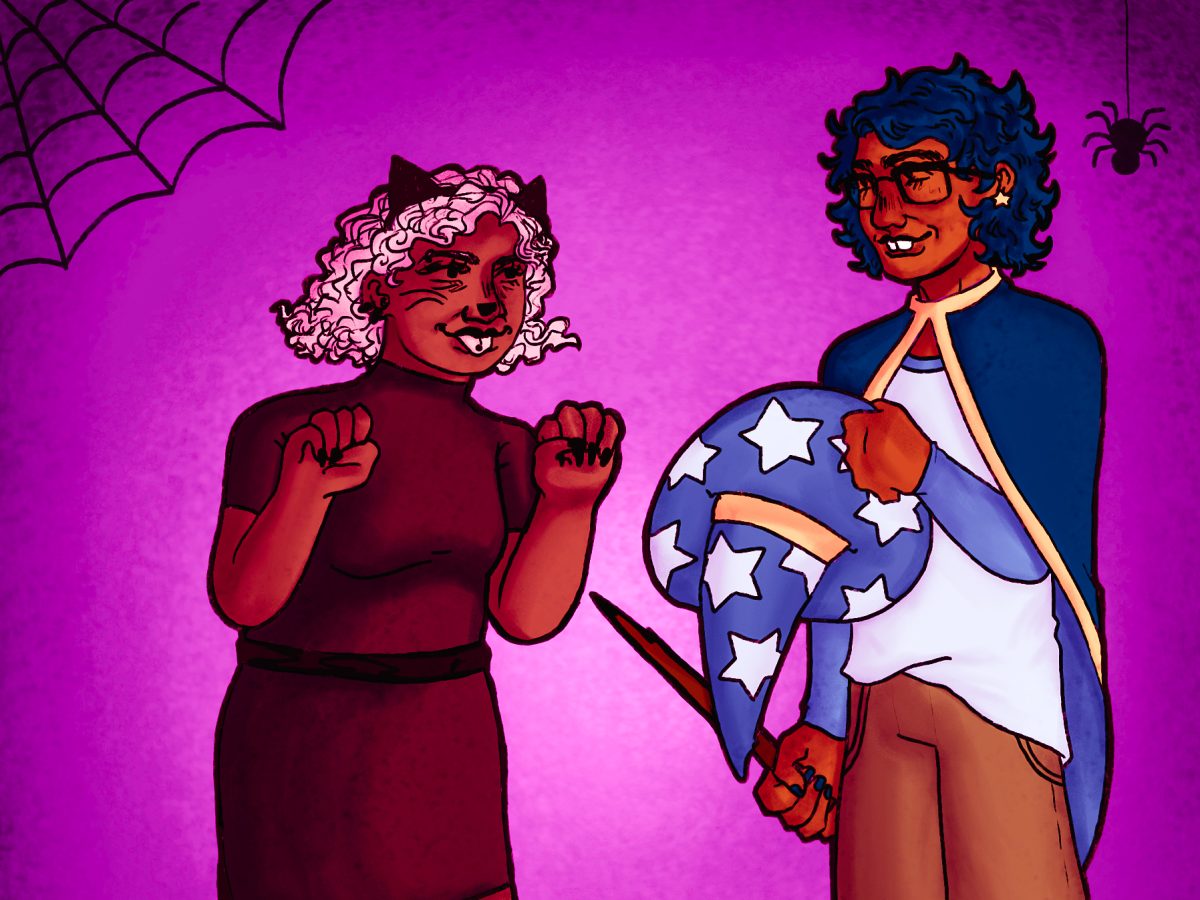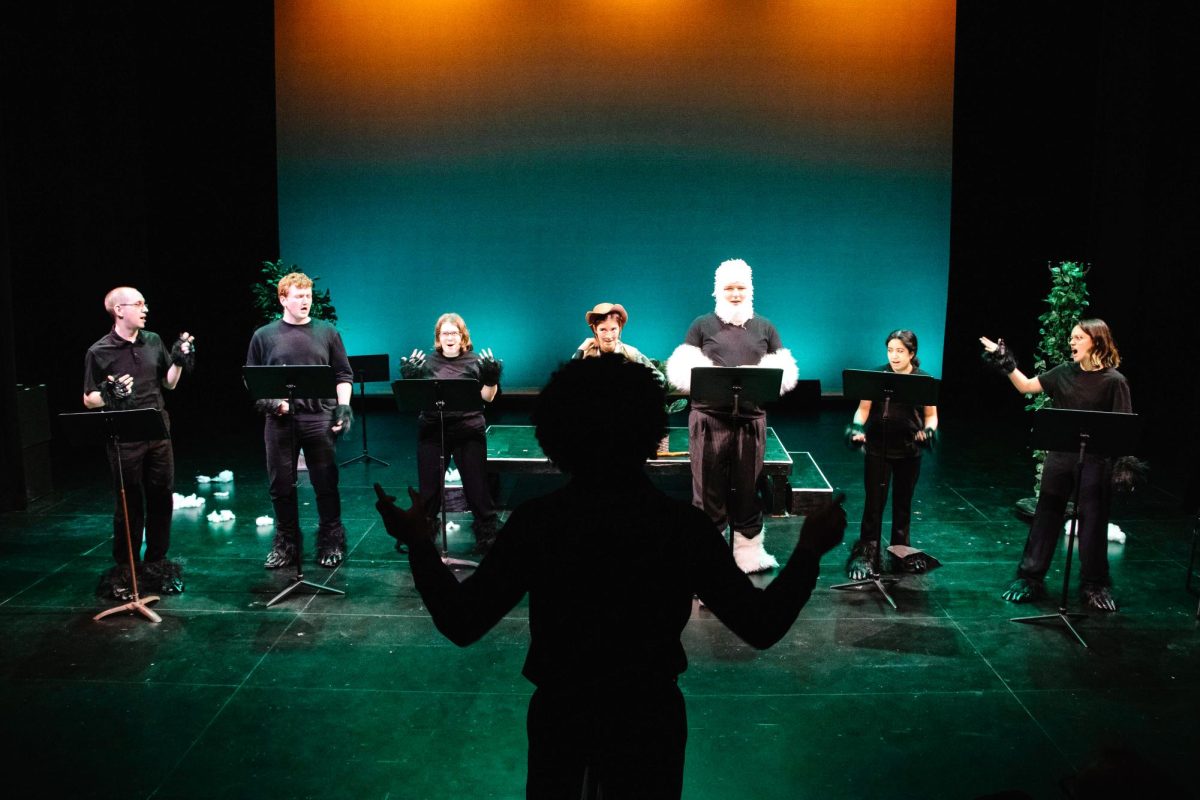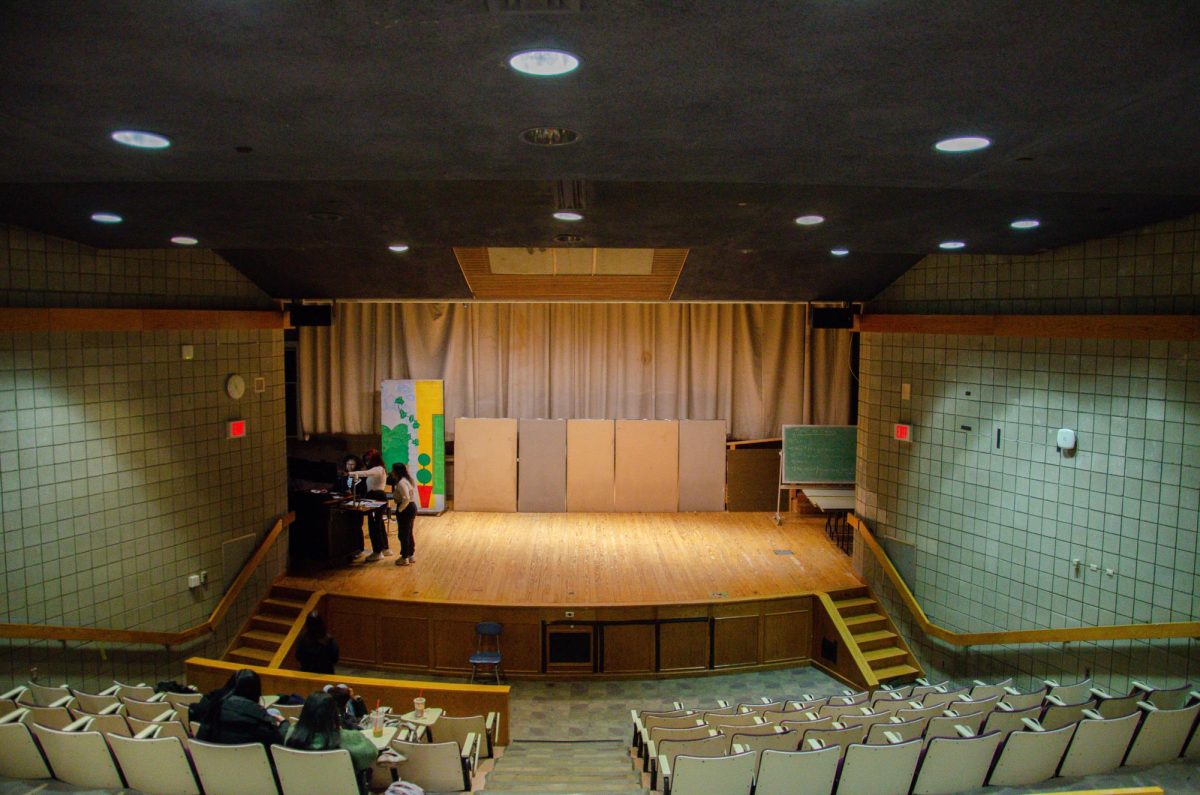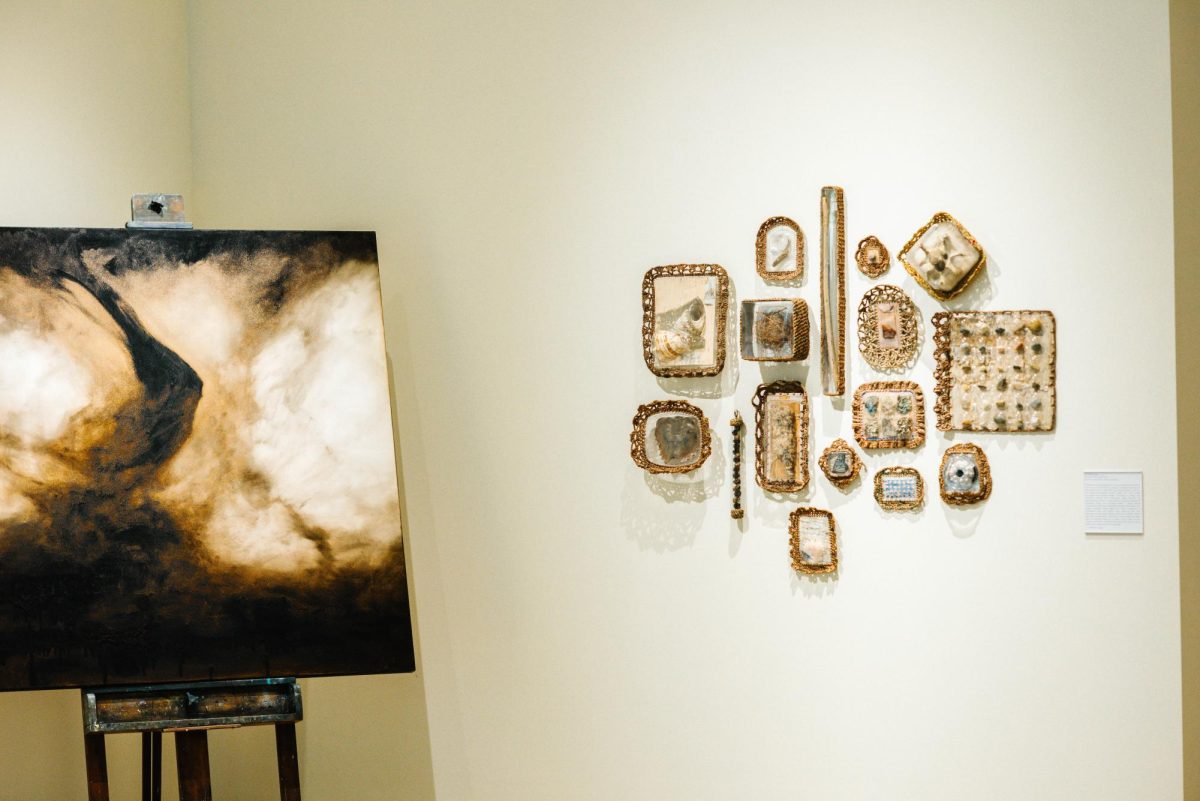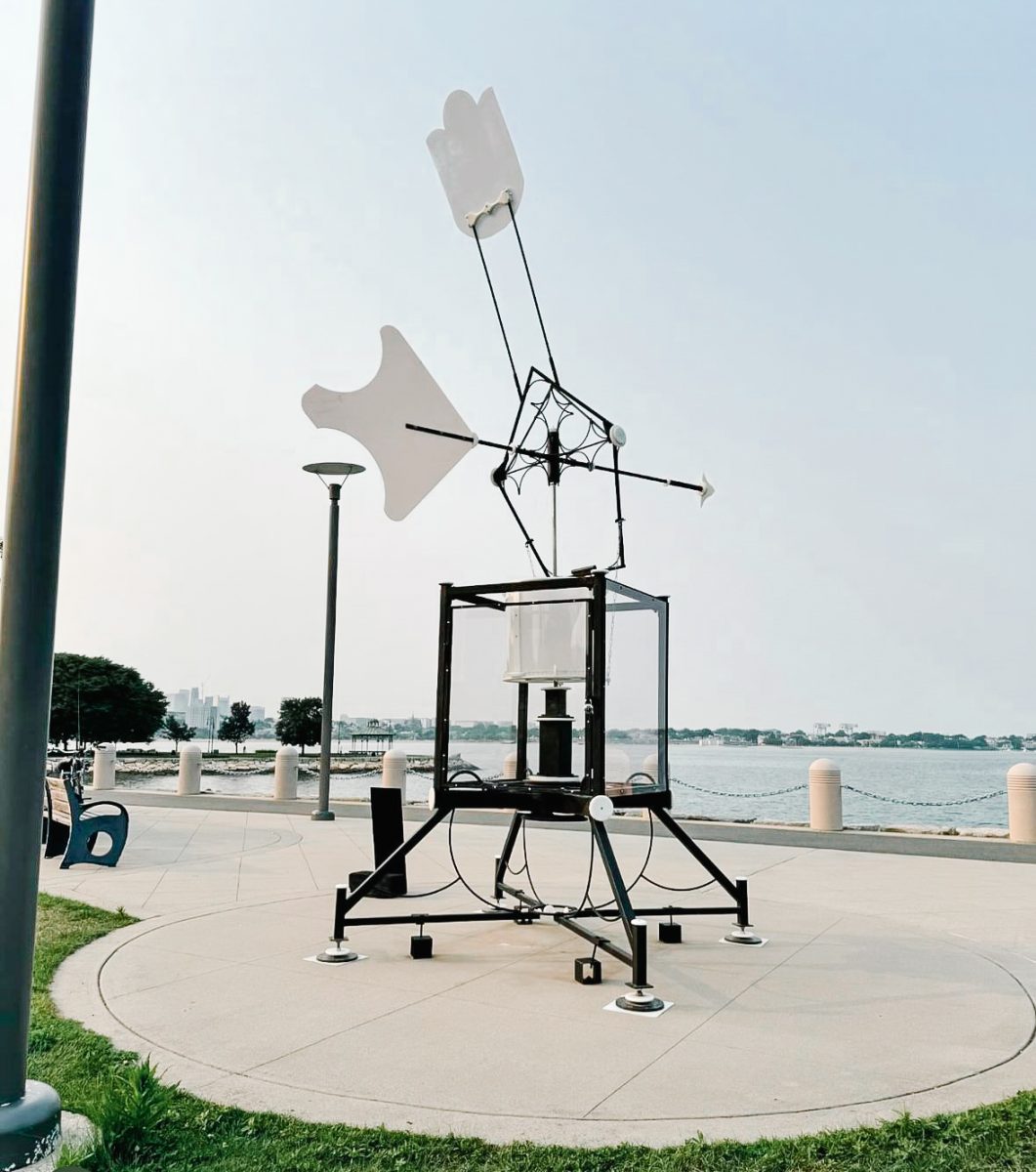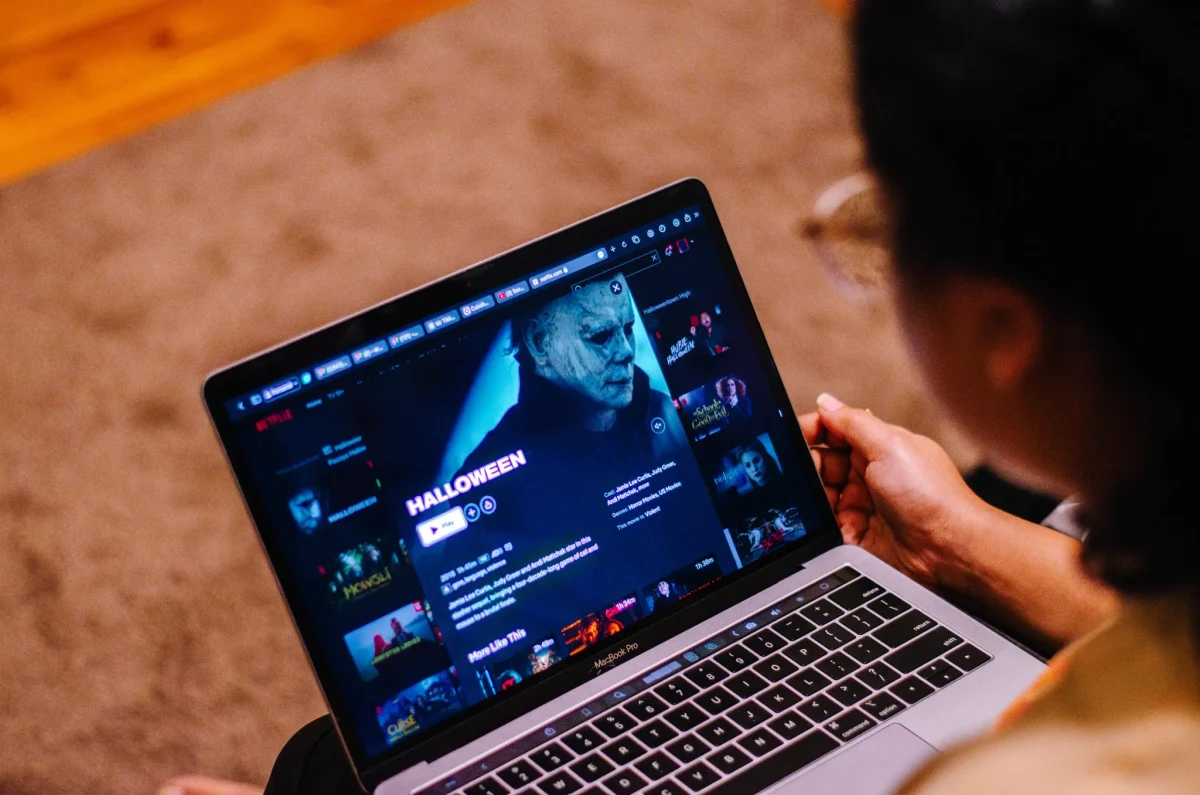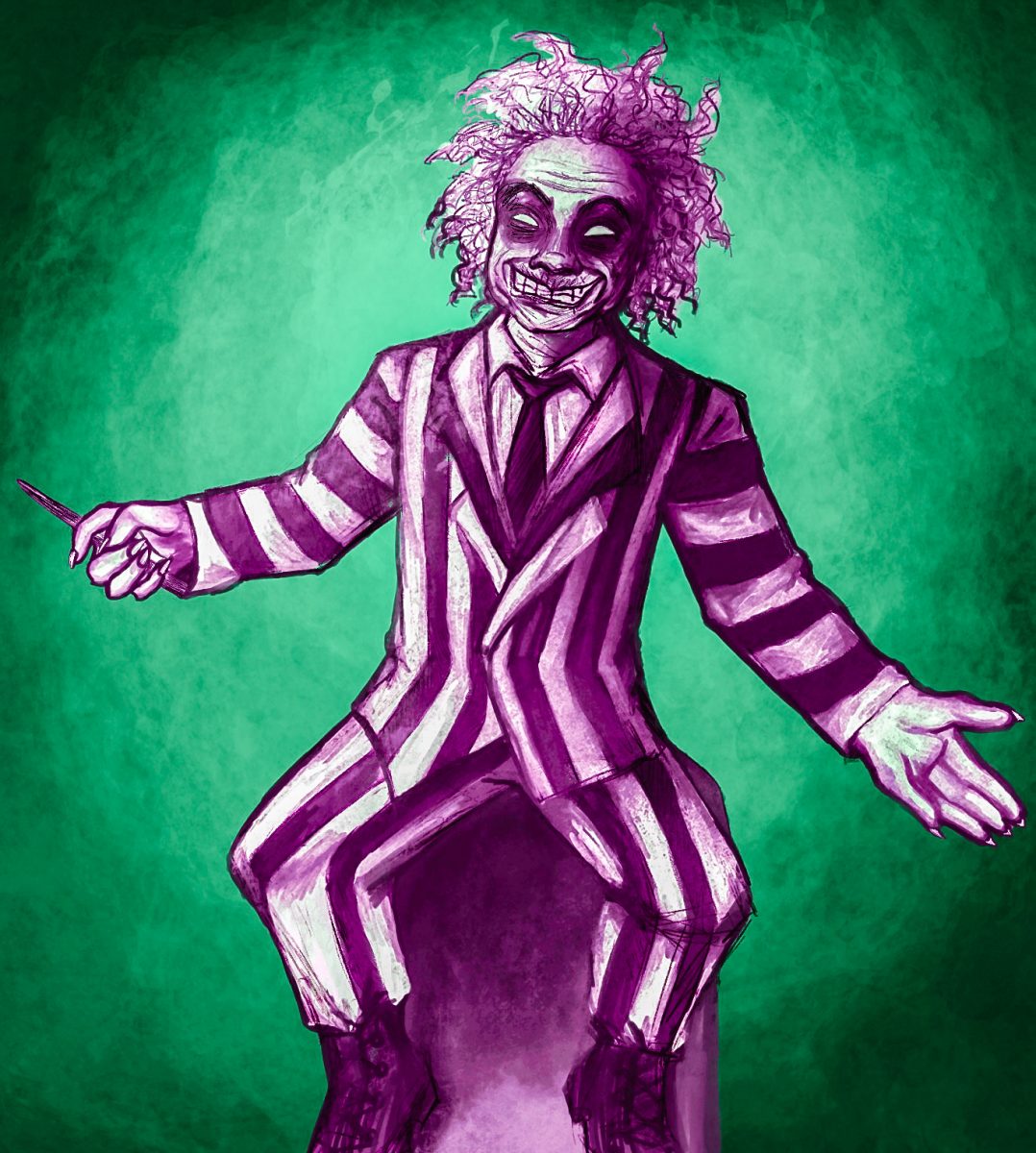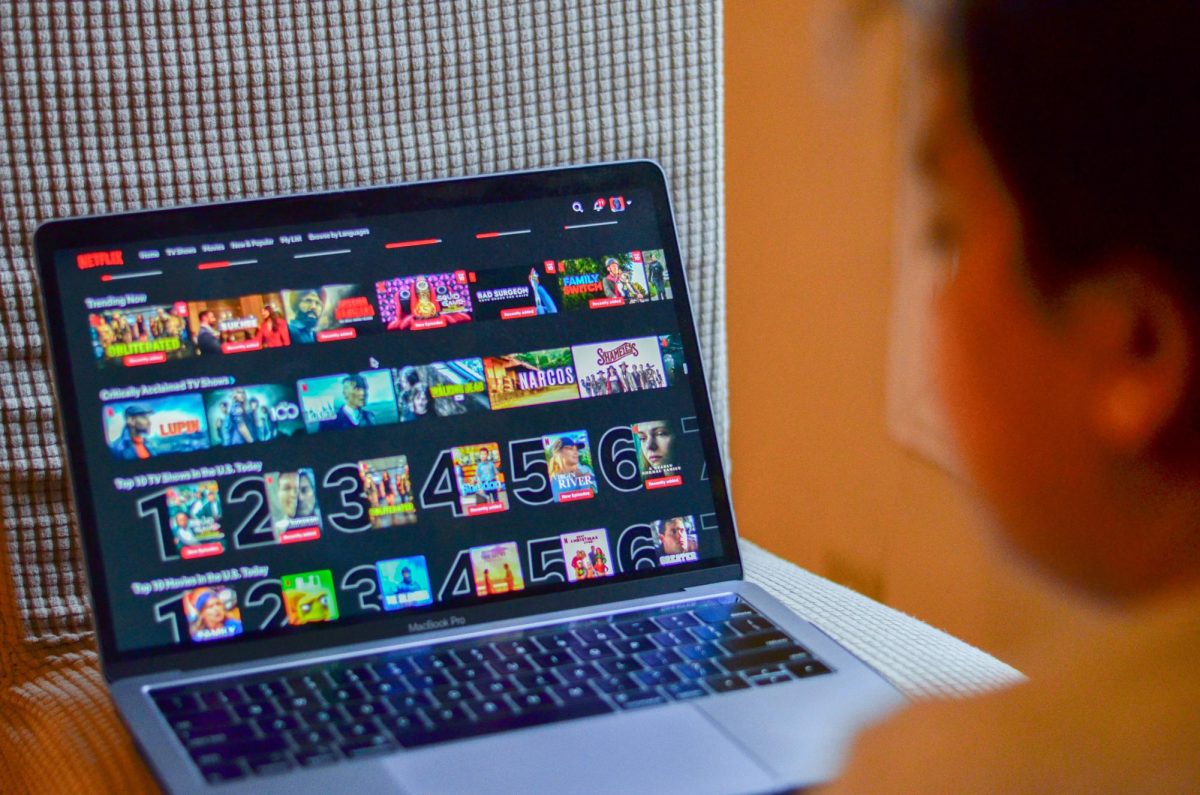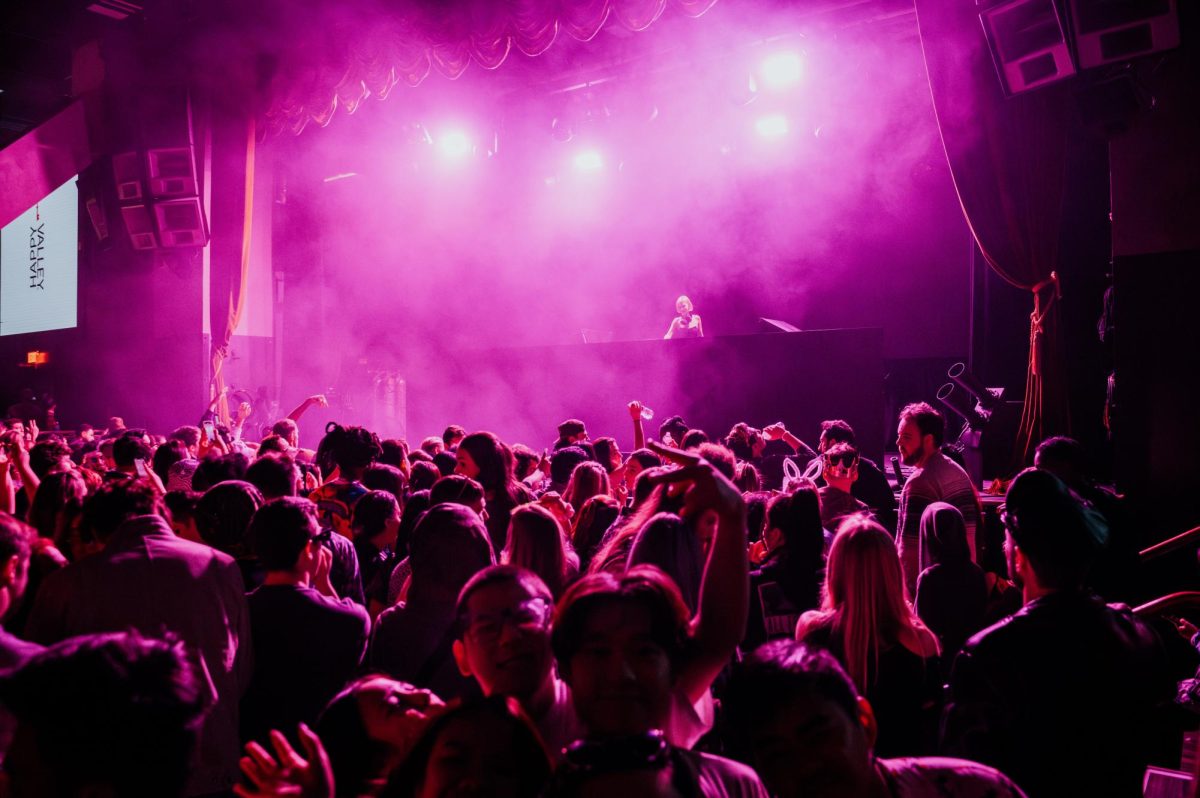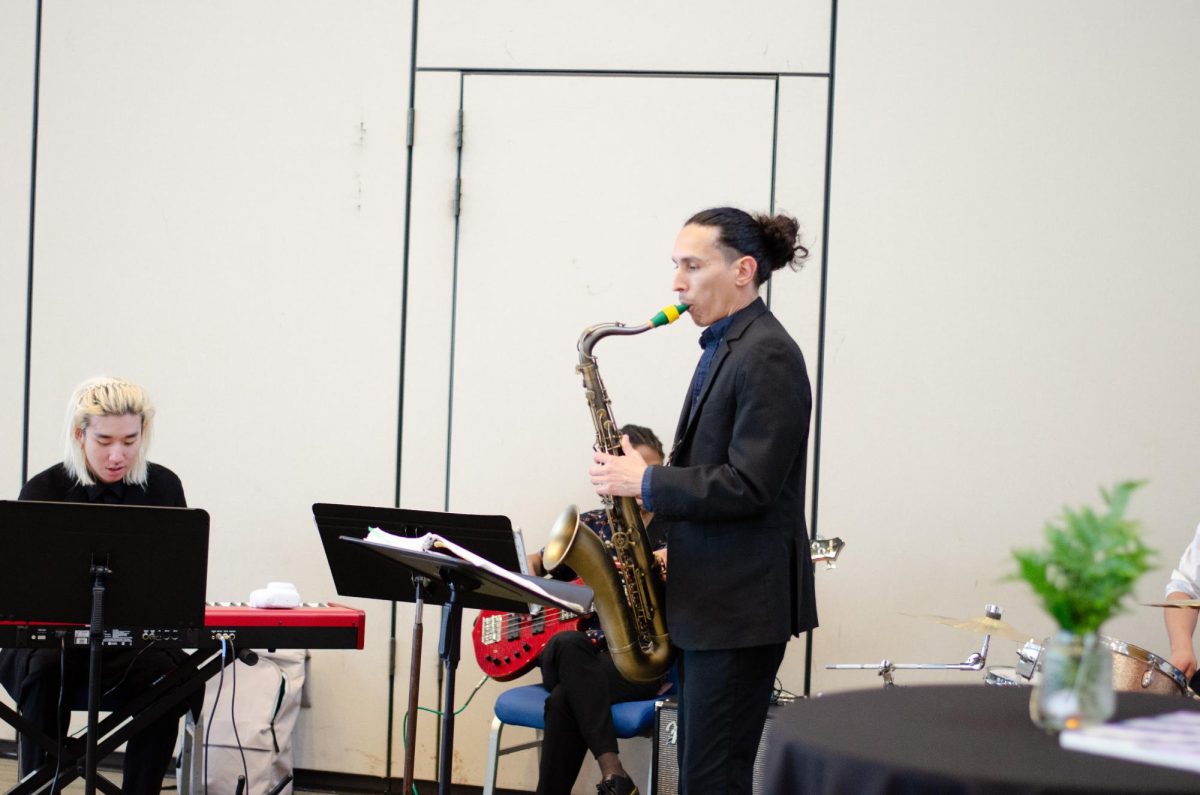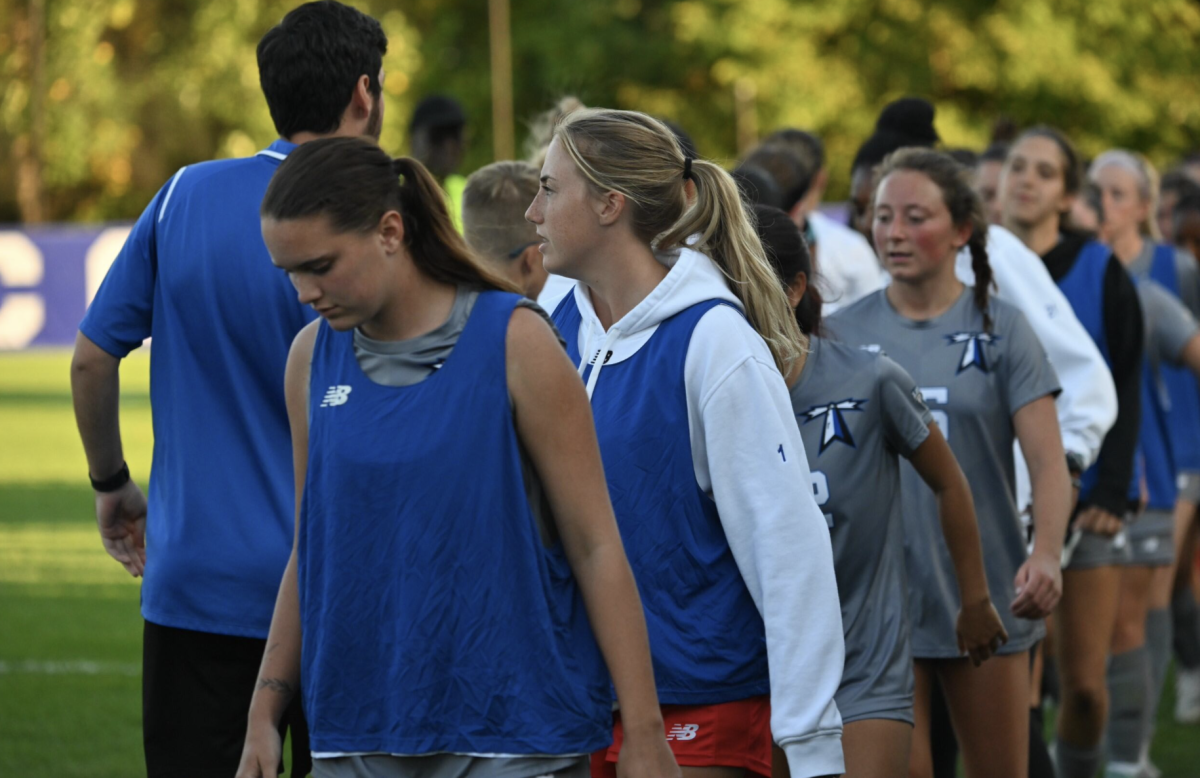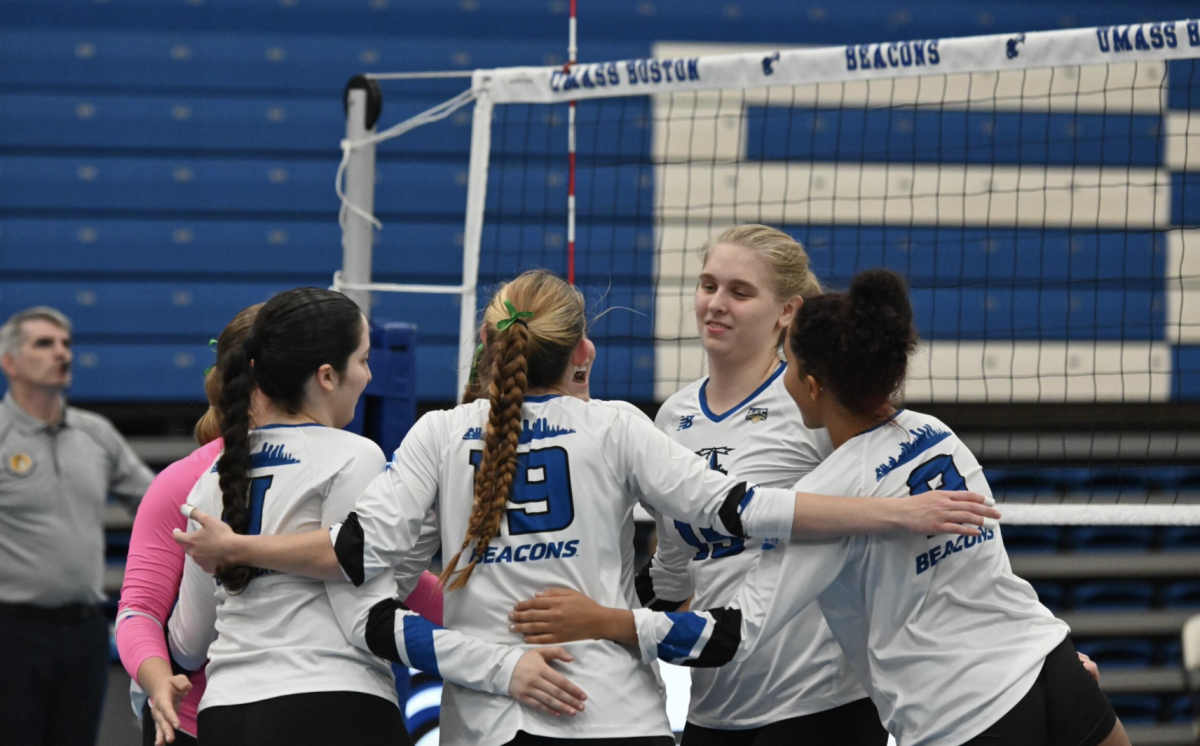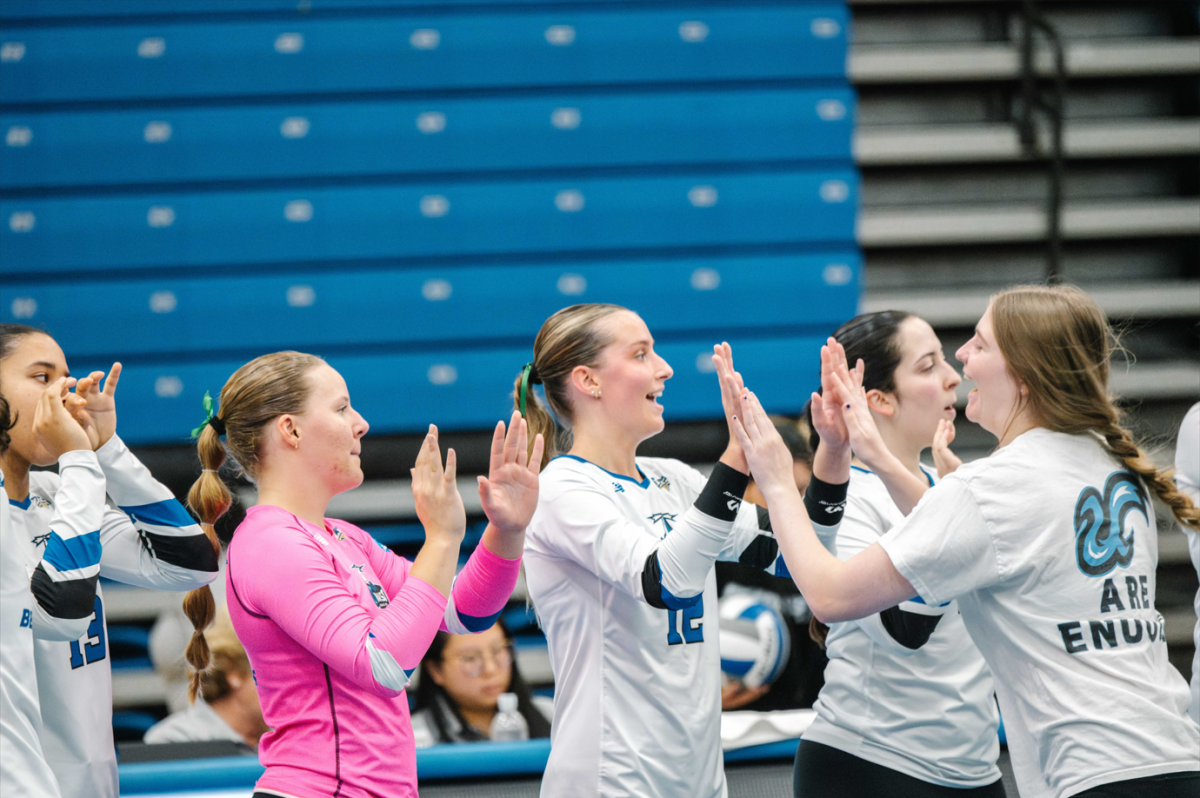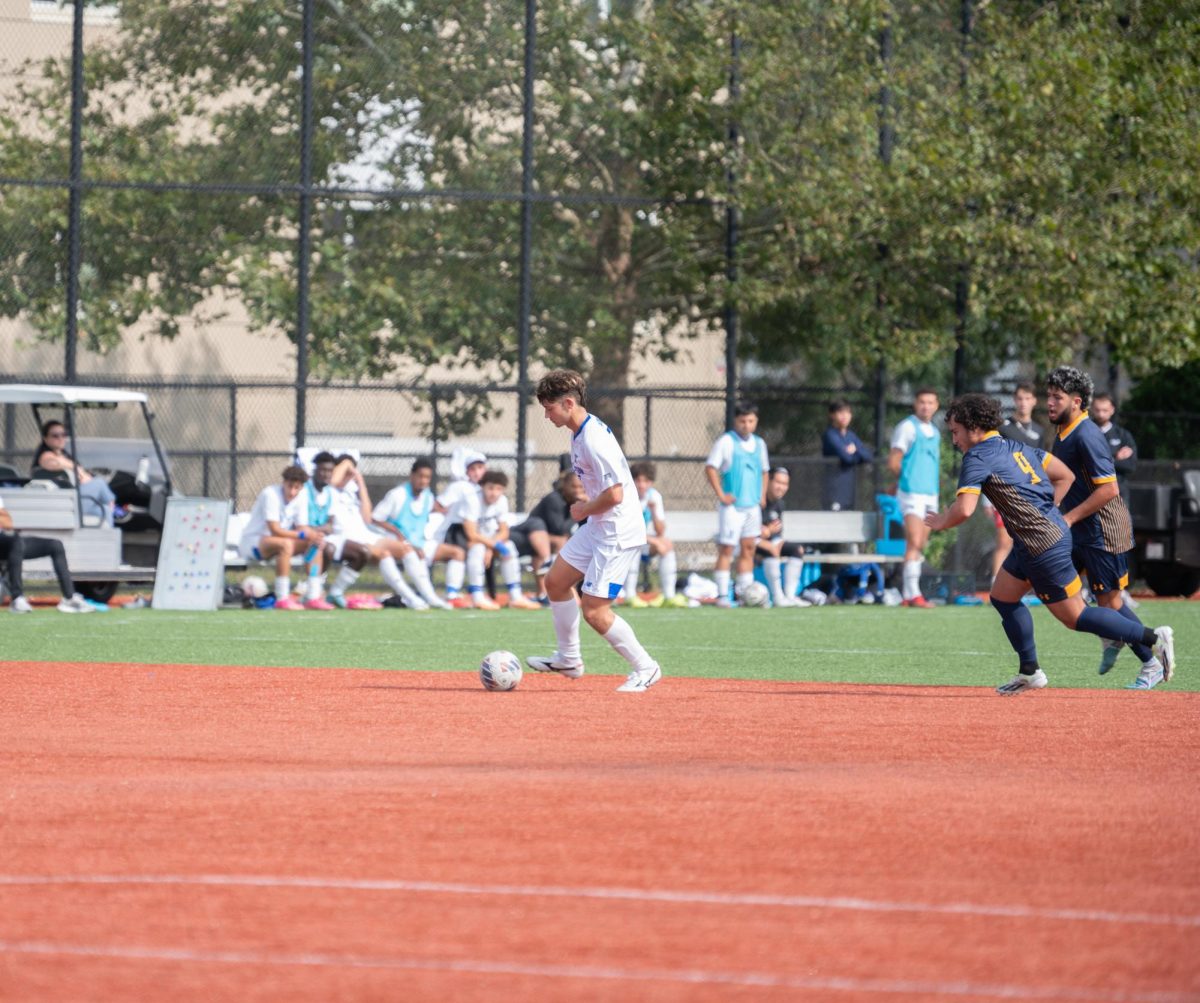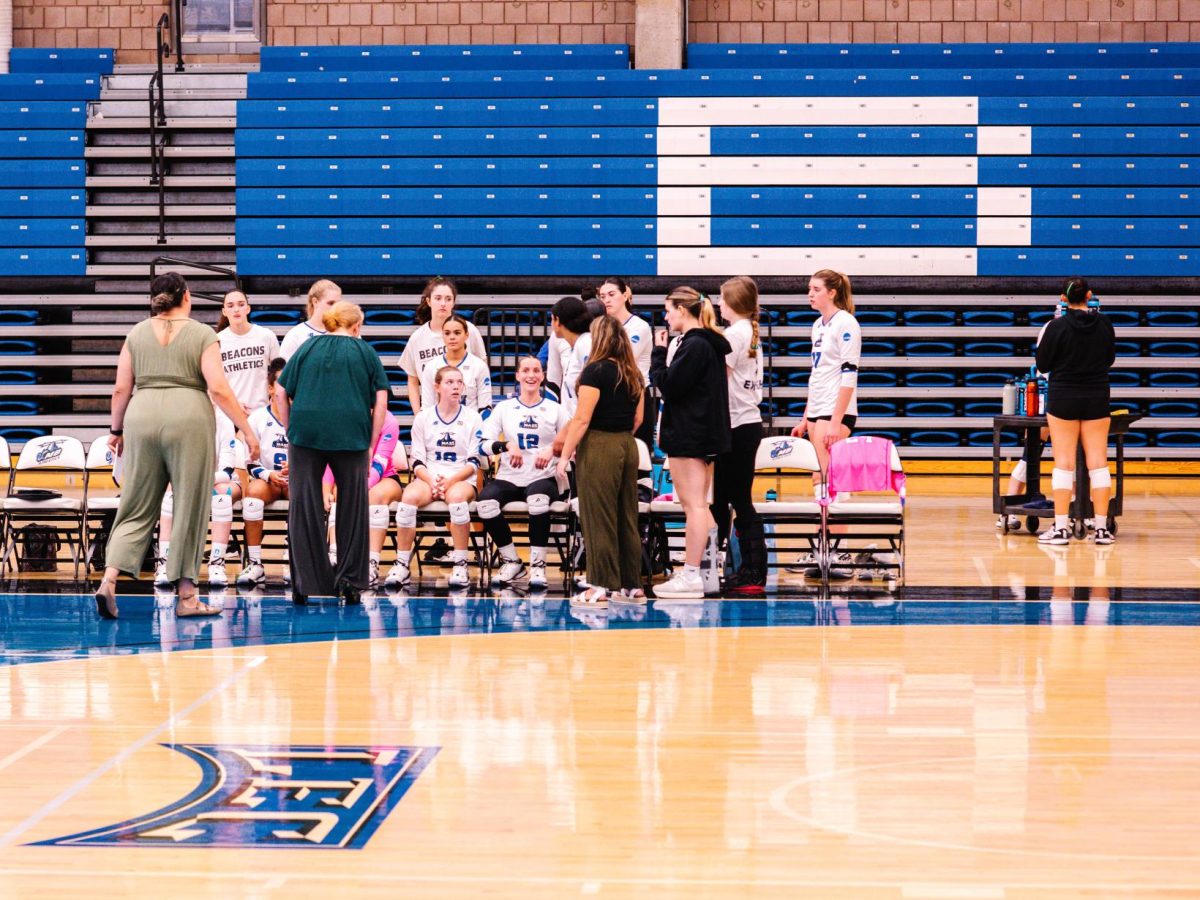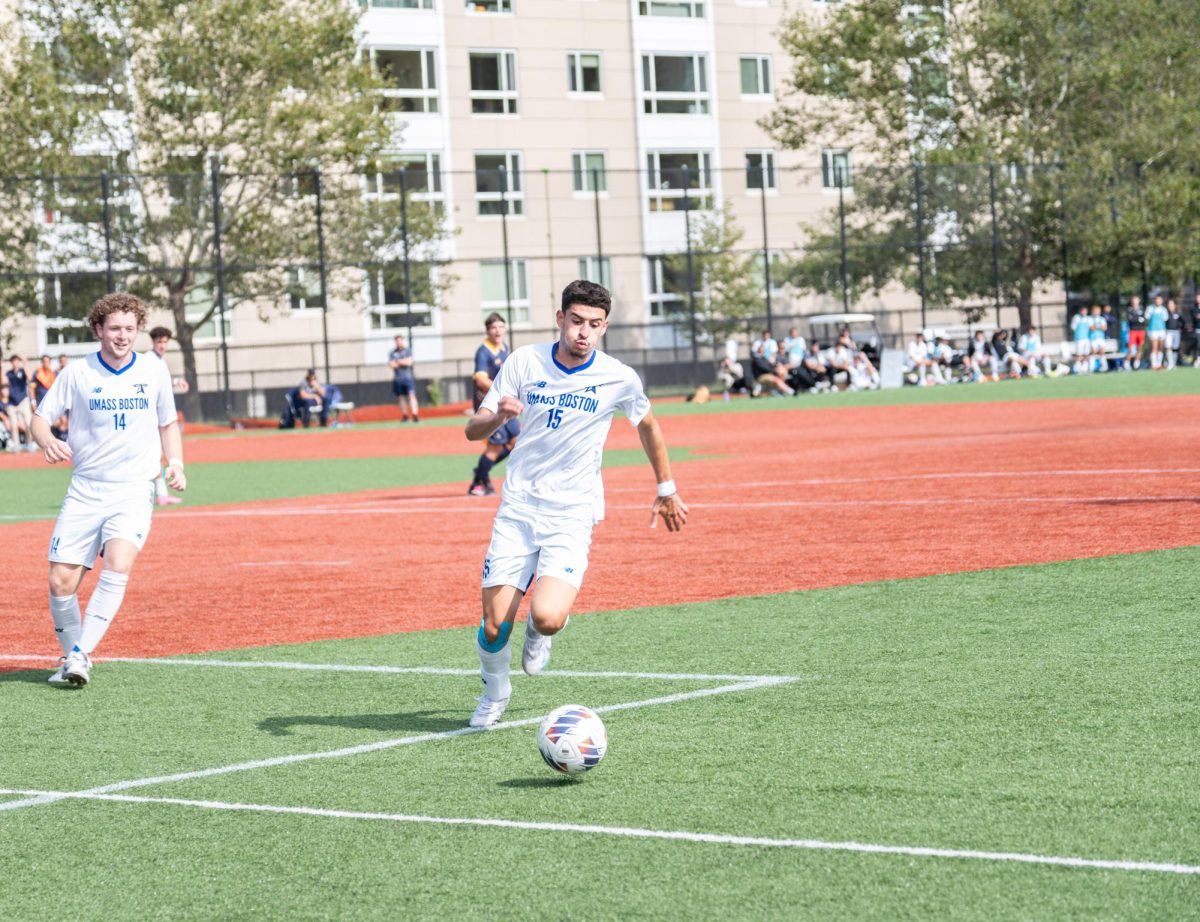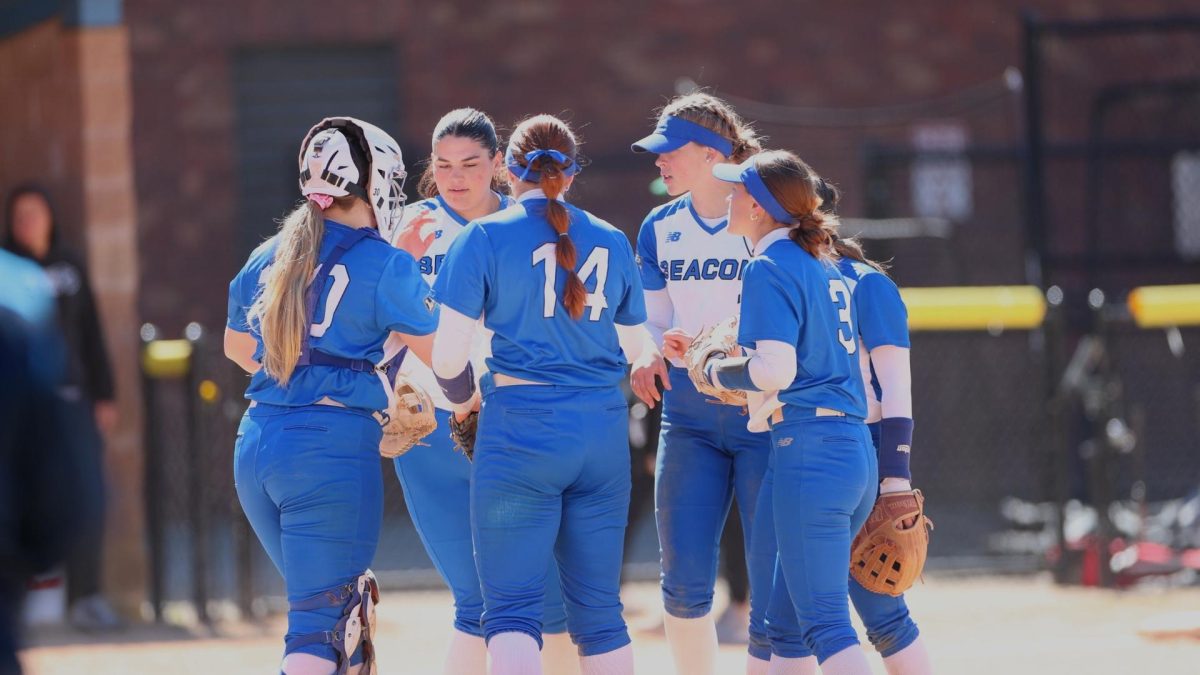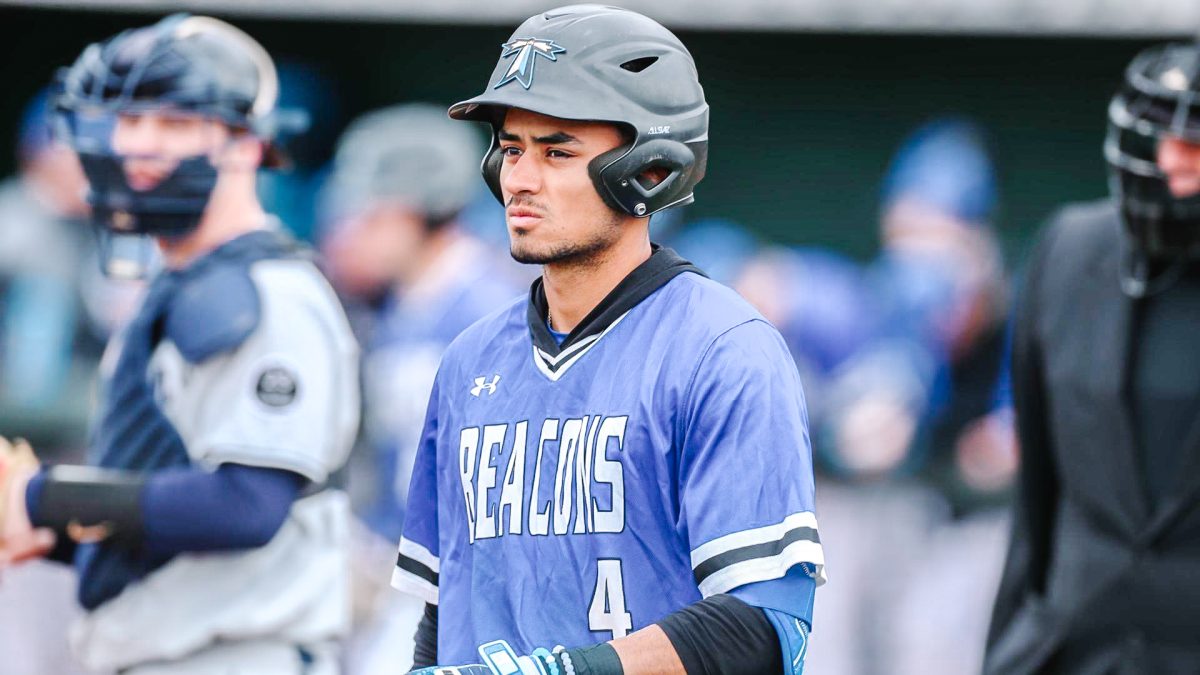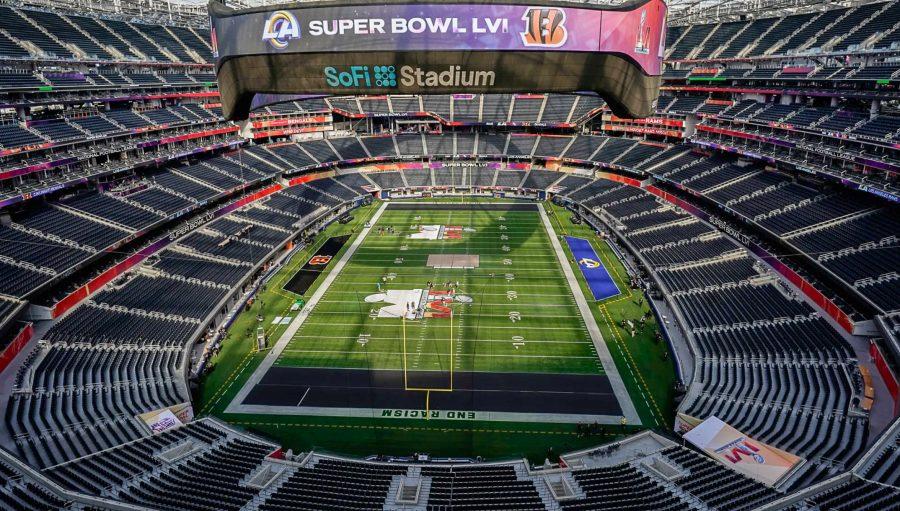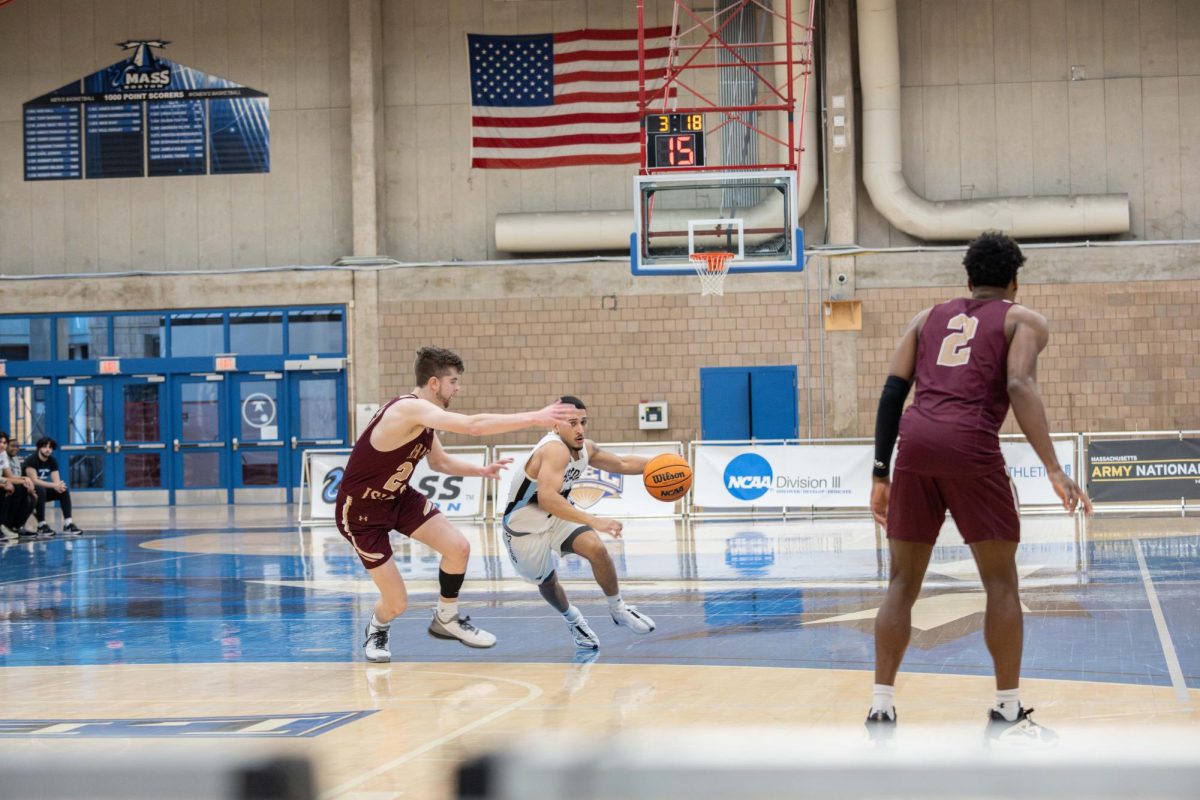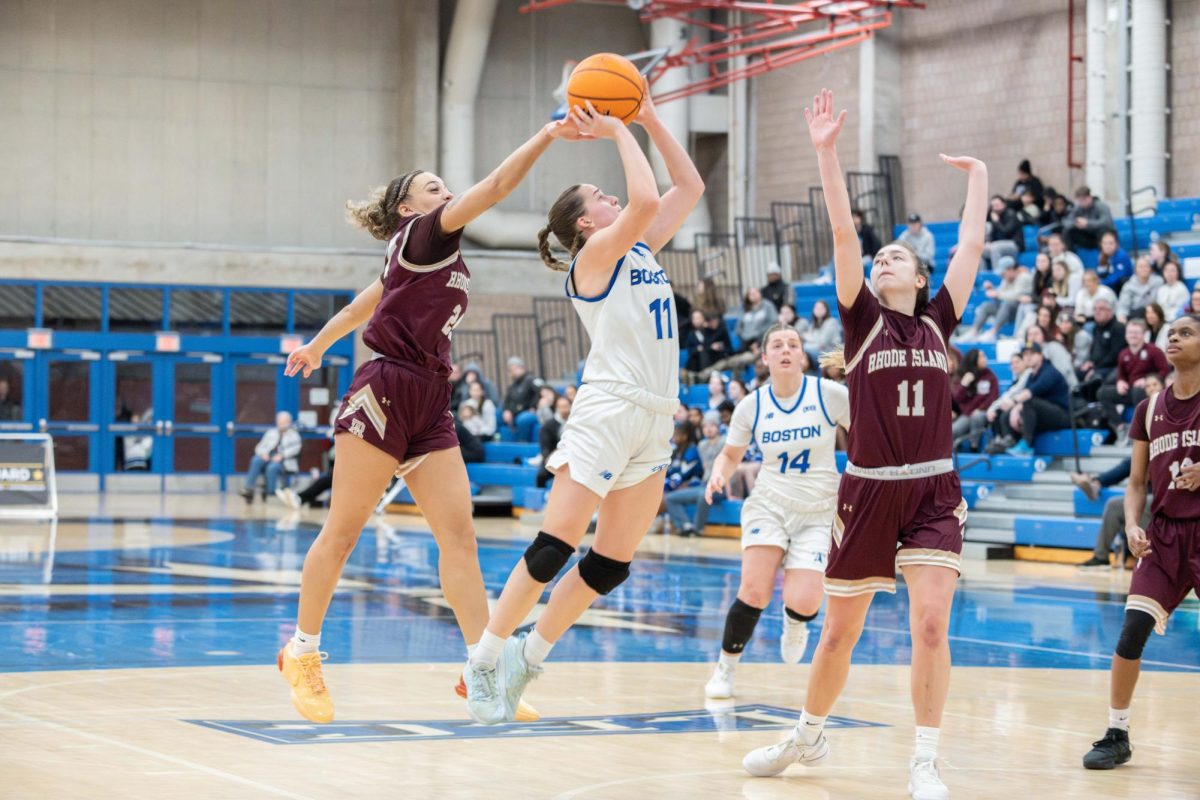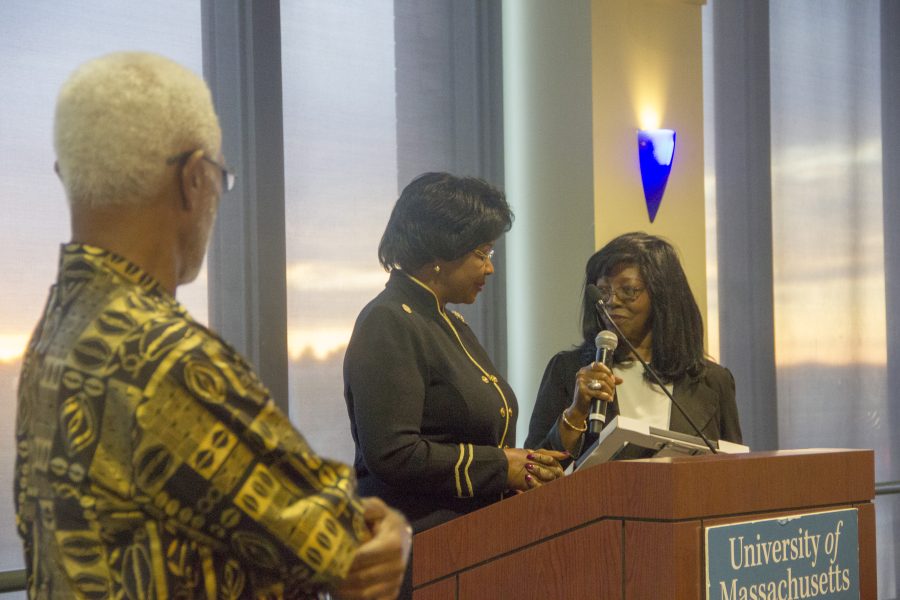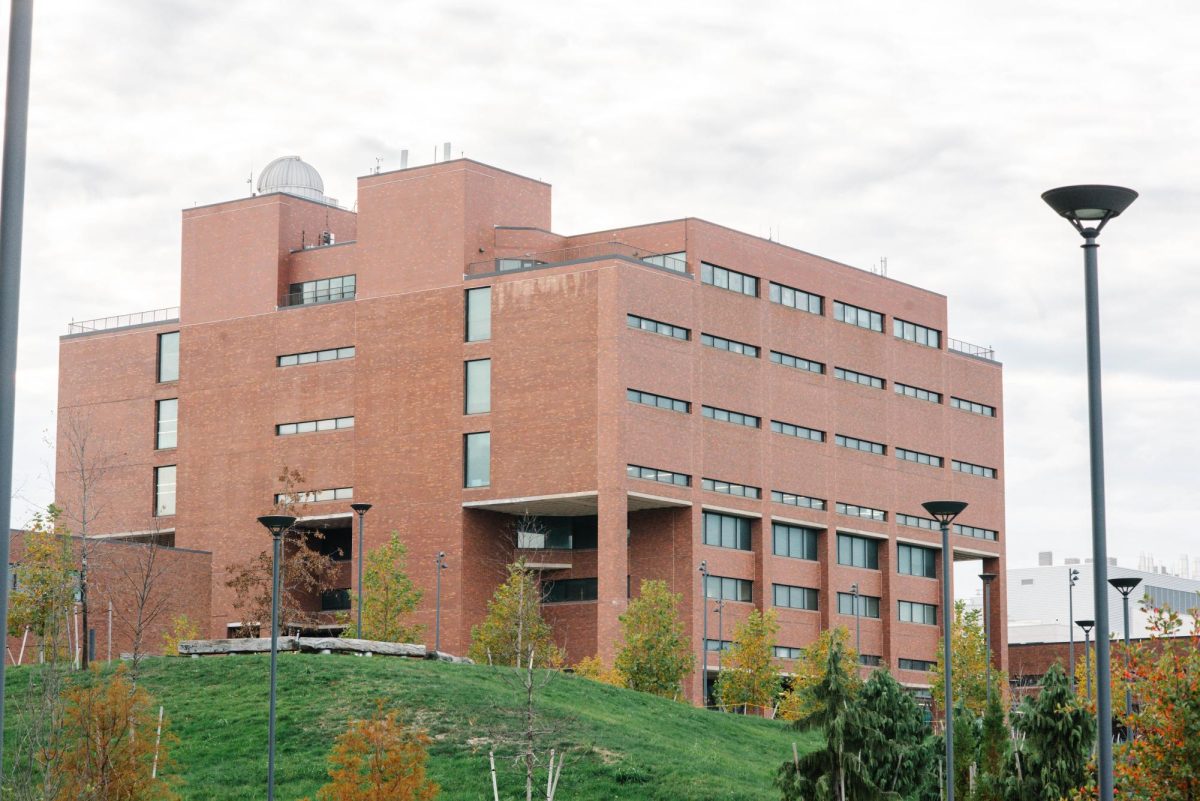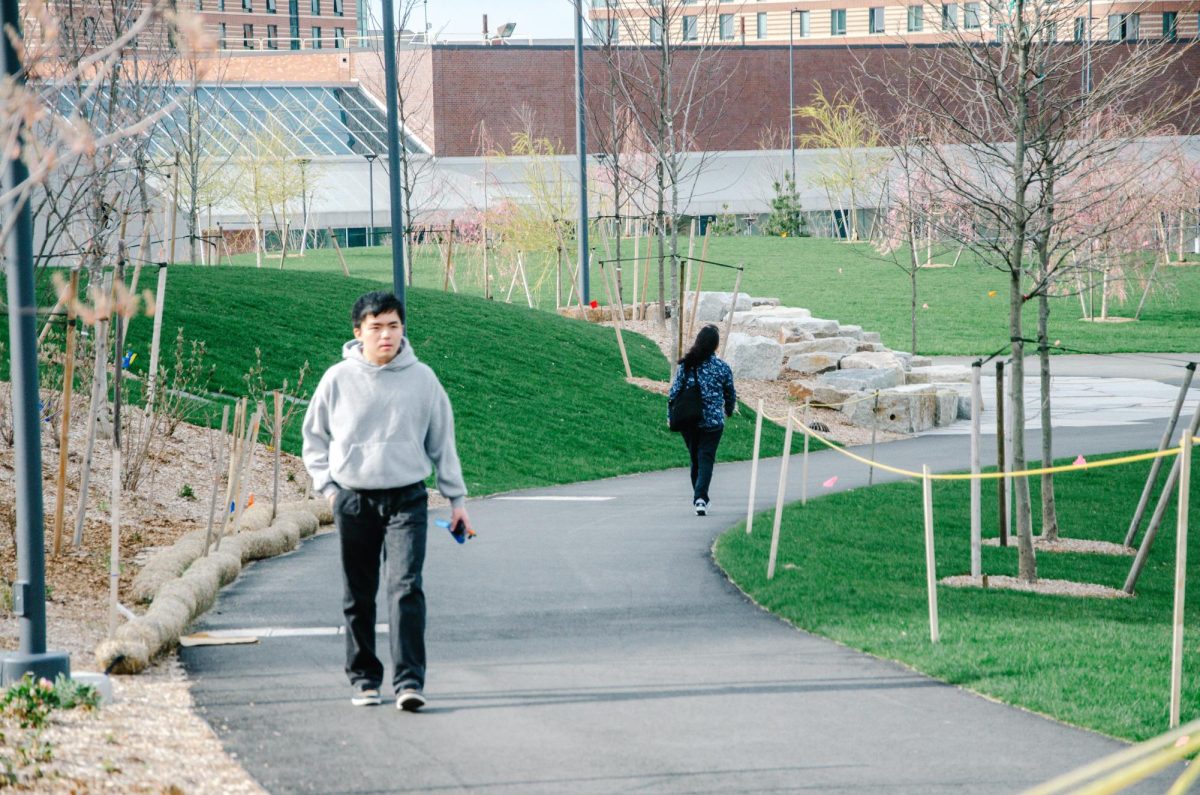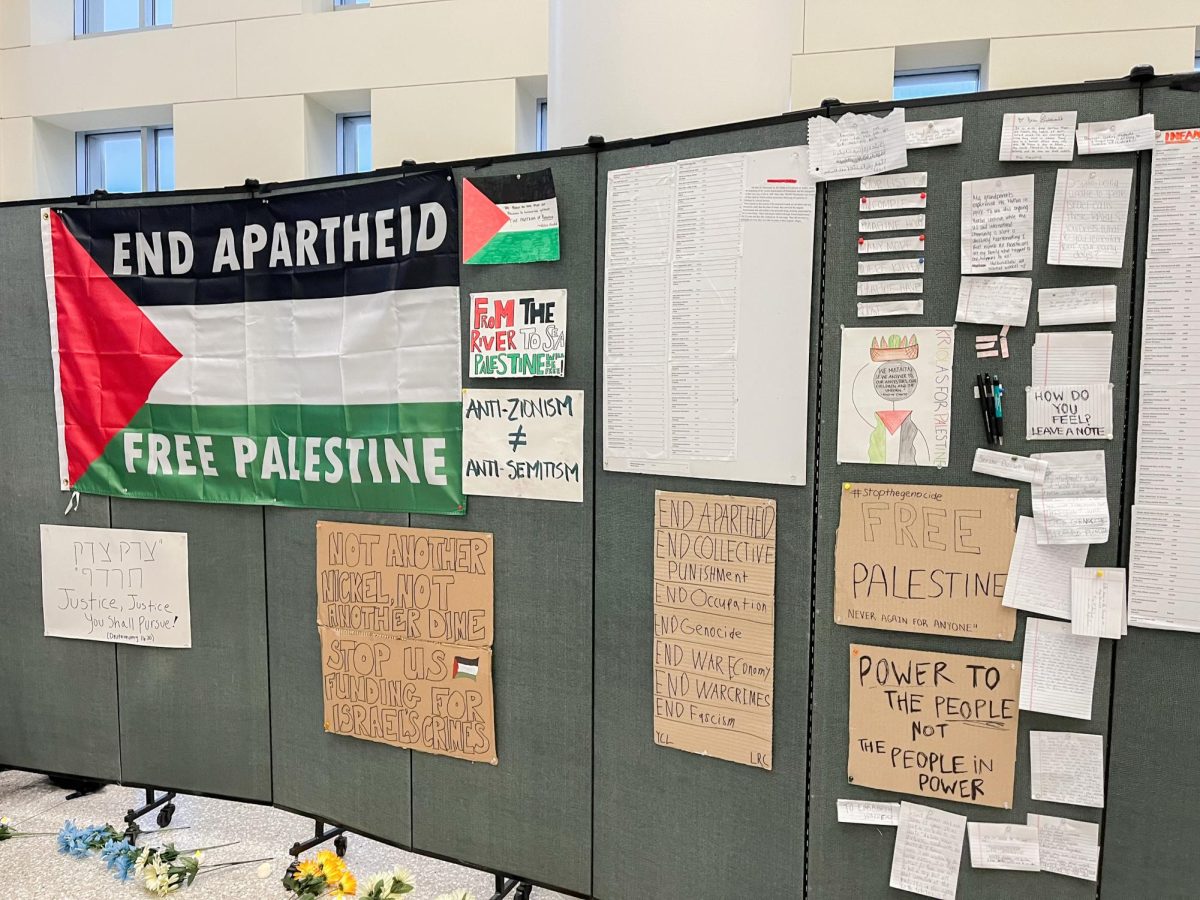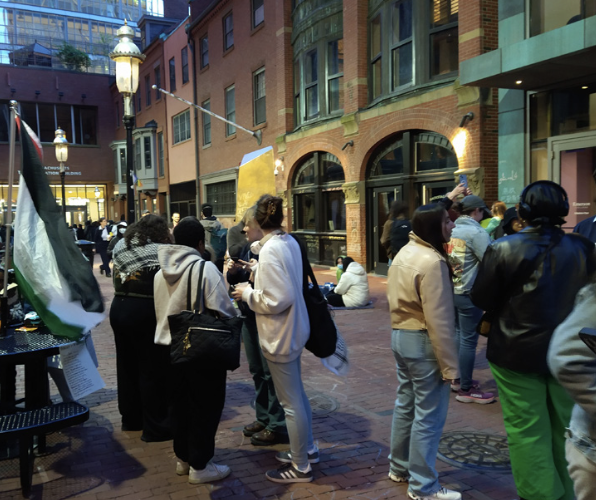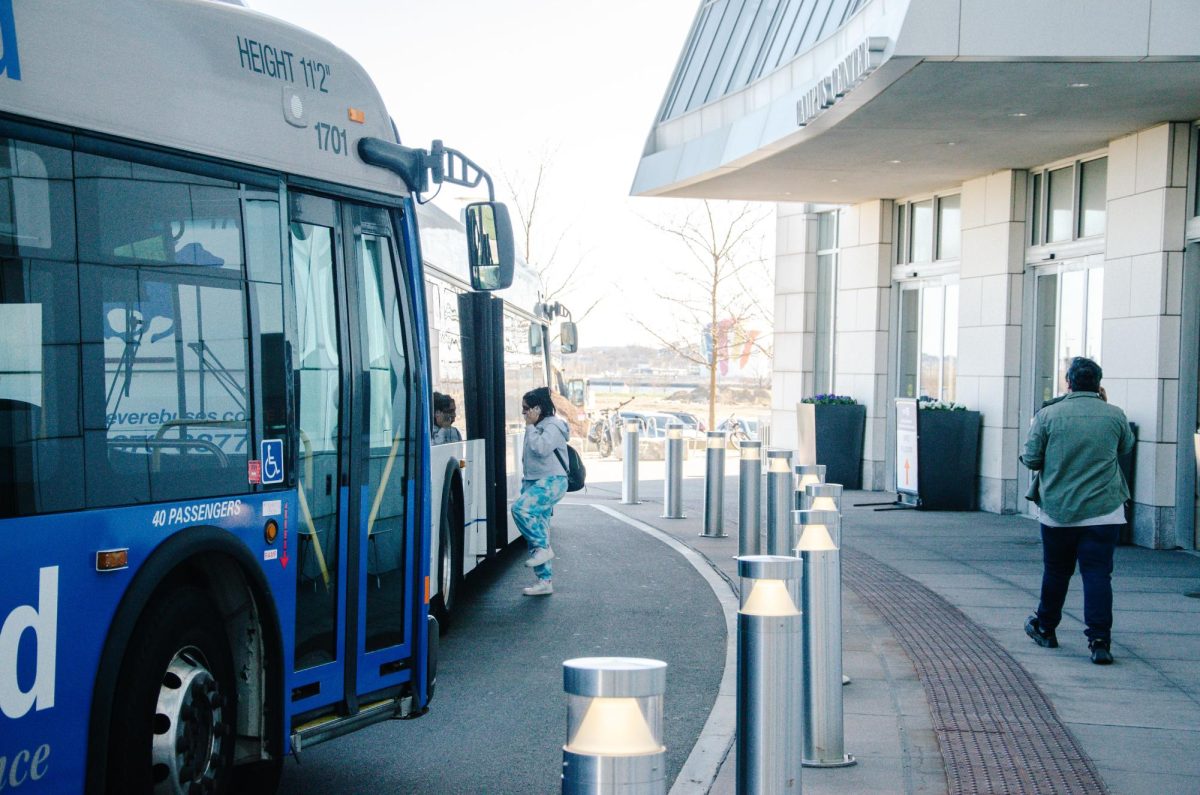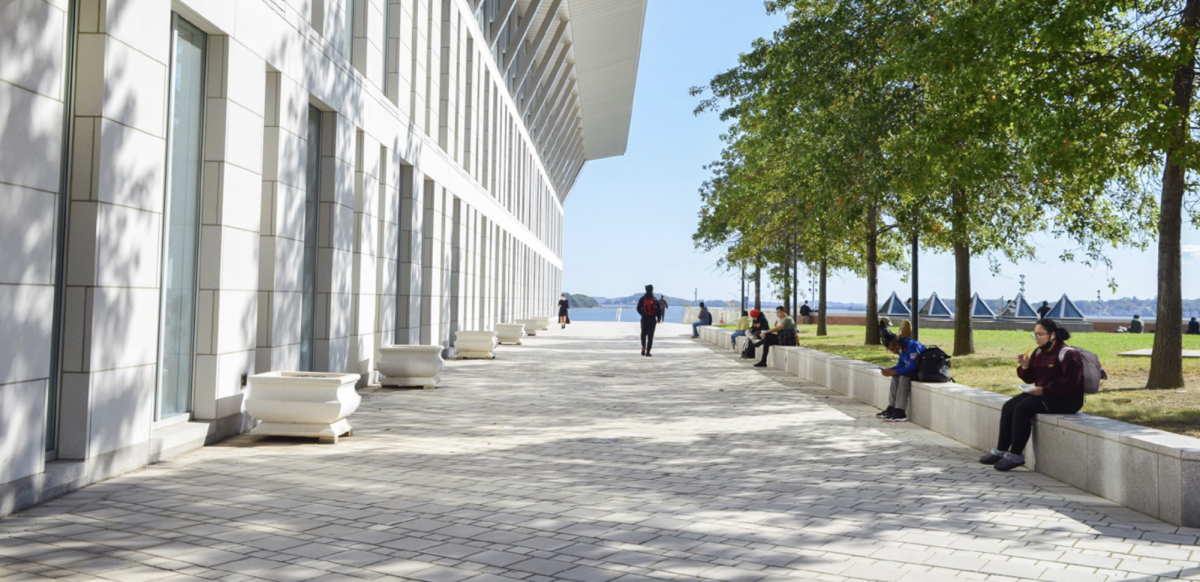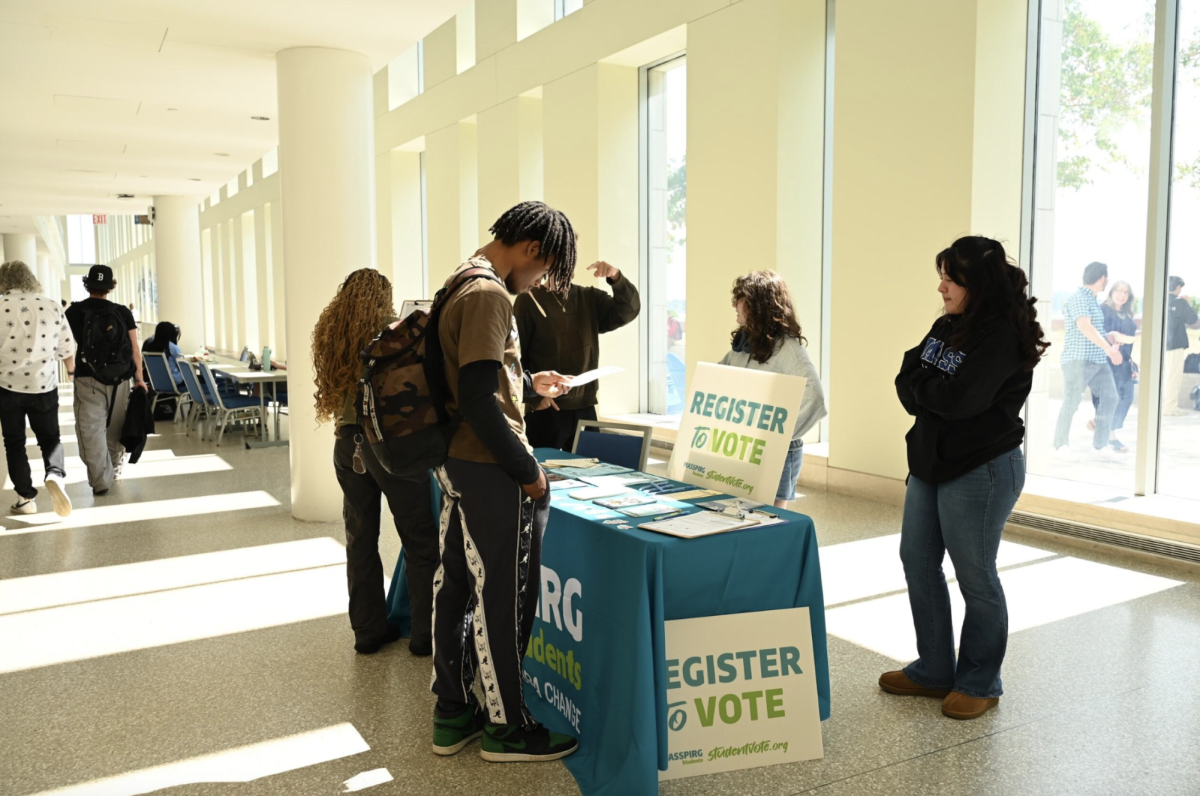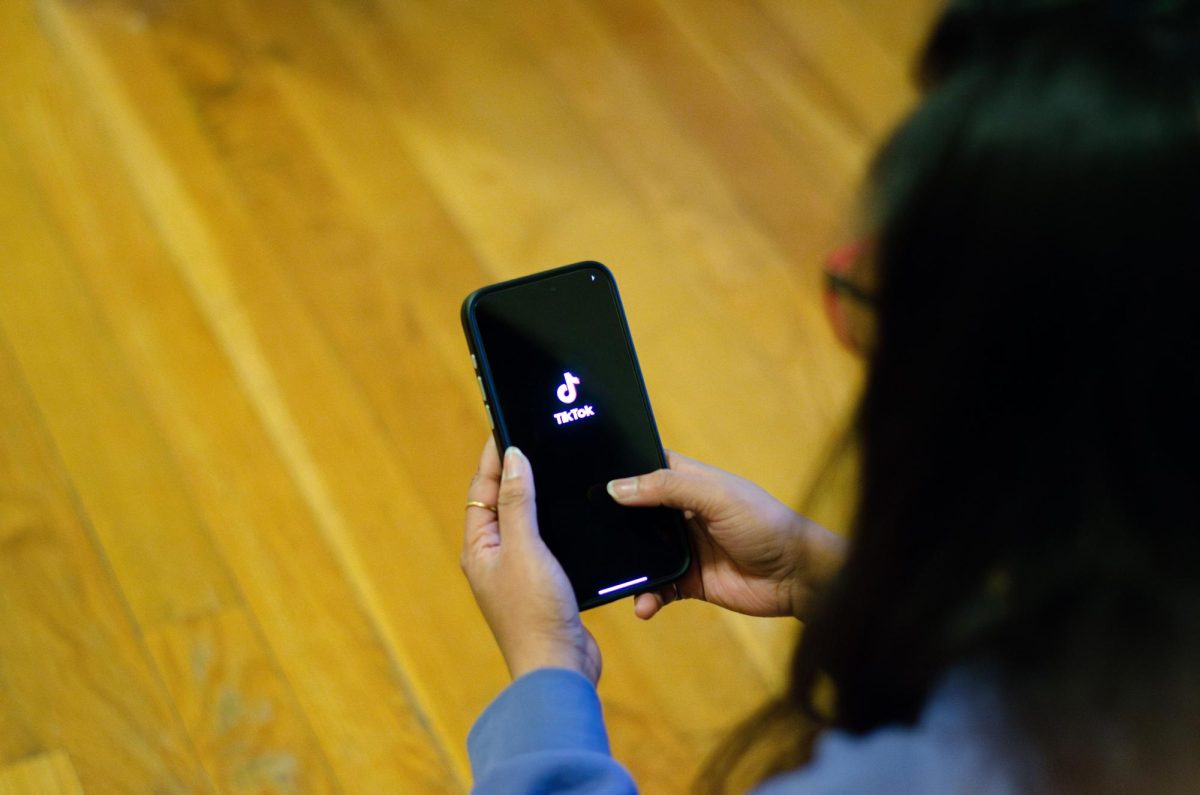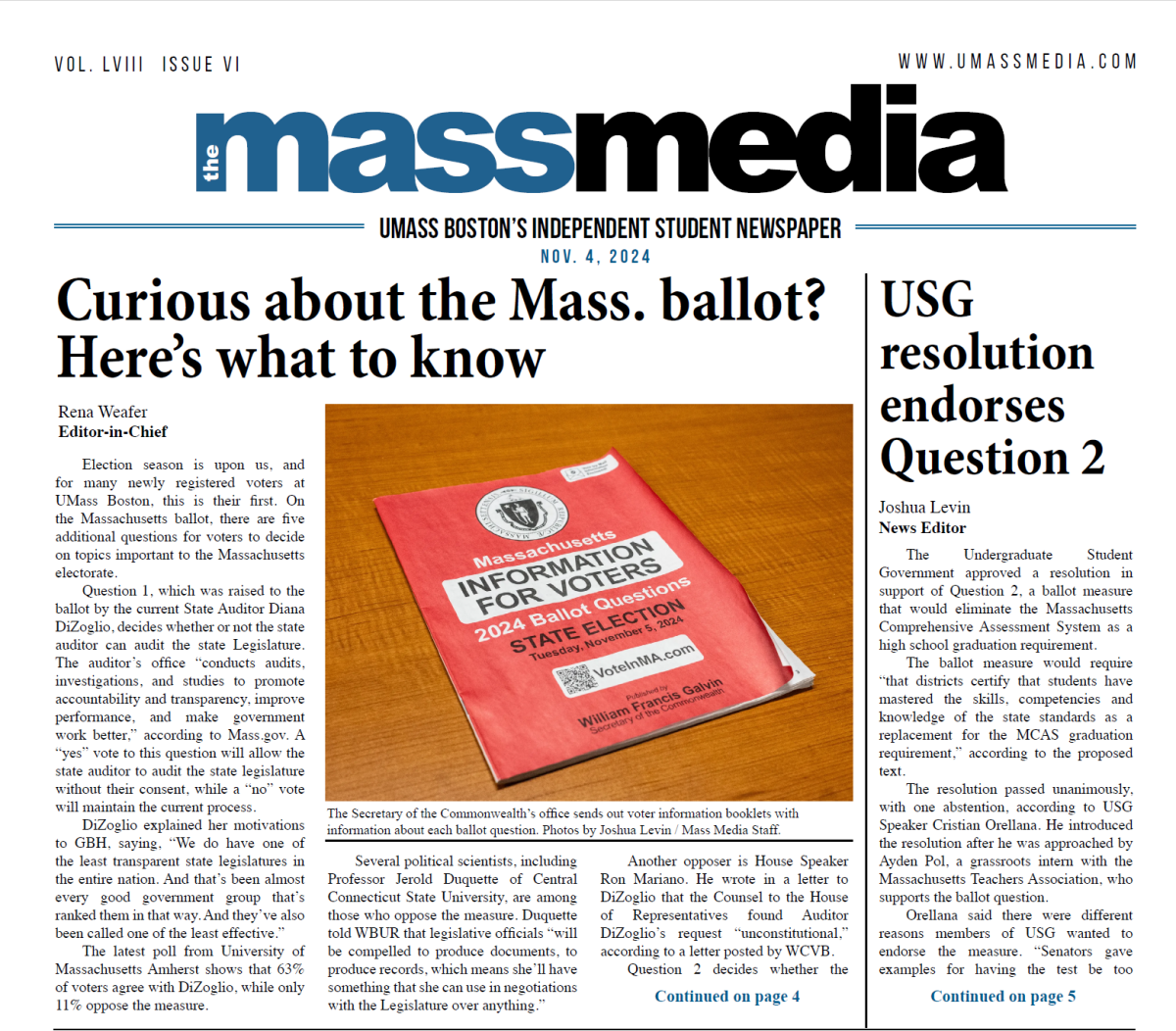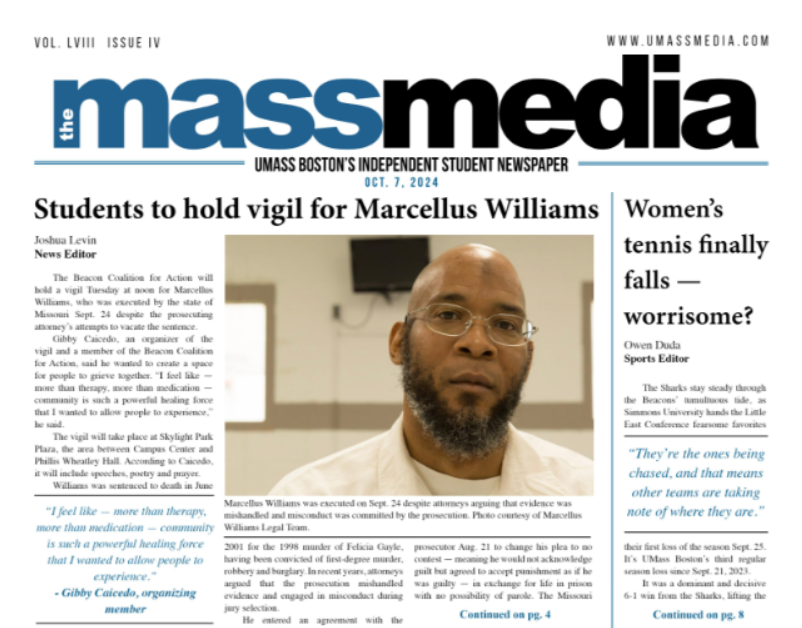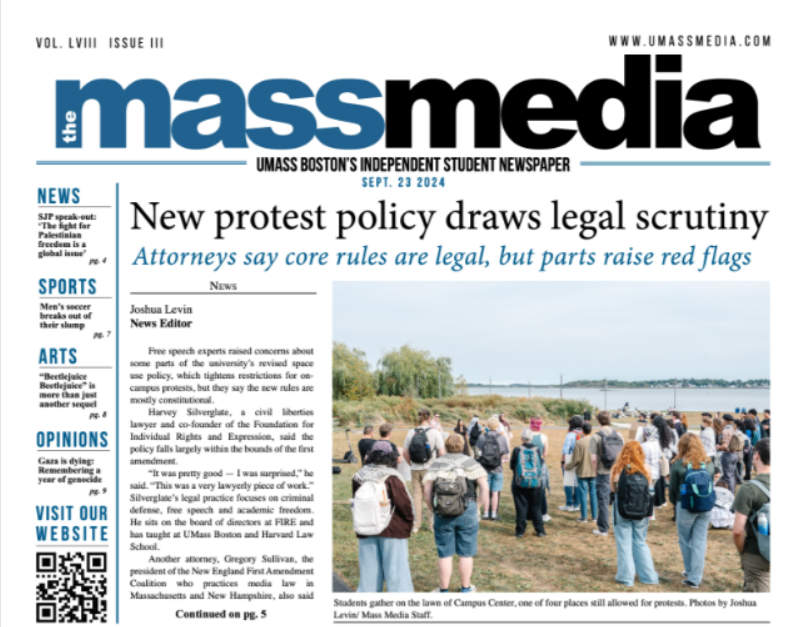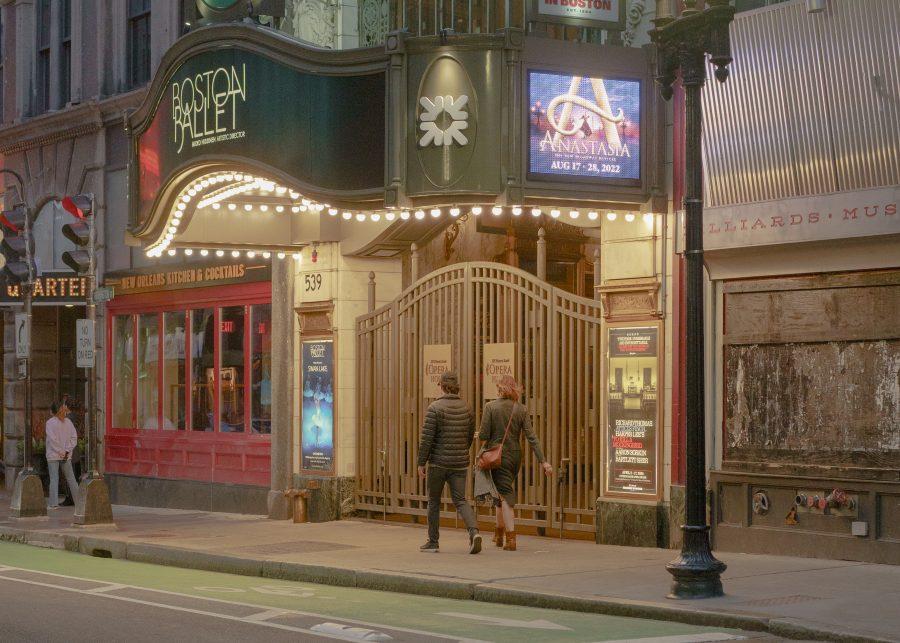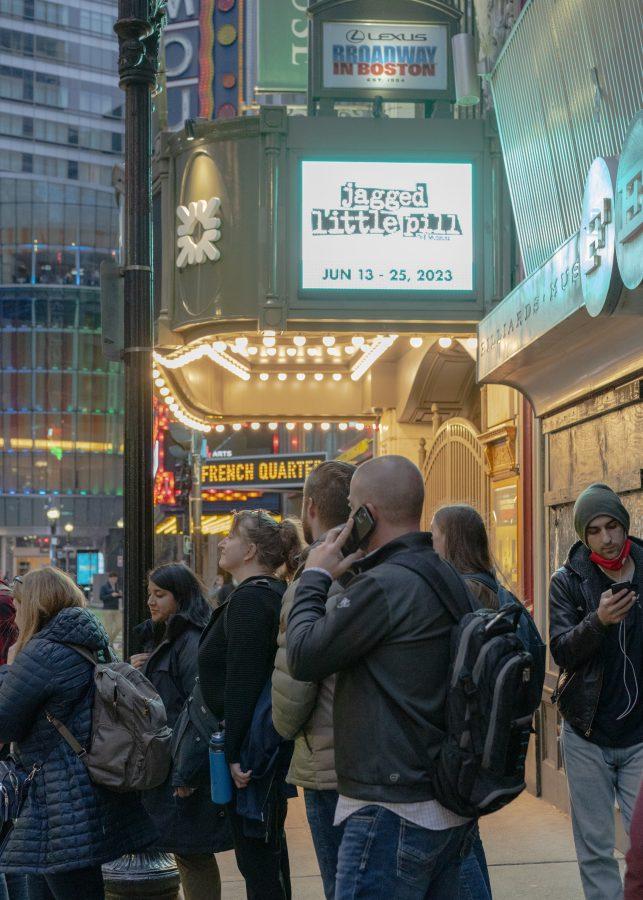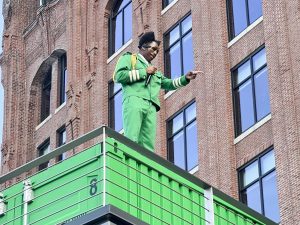Live theater: a dying art amongst young people?
Two pedestrians disregard the lit marquis of the Citizens Bank Opera House in Boston, Mass. on Thursday, March 31, 2022. Photo by Dom Ferreira / Photography Editor
March 31, 2022
With bold theaters lining the streets of Manhattan with glittering marquees, and similar sights along the bustling streets of Boston, live theater seems like a staple in big cities. Whether these are seen as tourist traps or of genuine interest and entertainment, live theater is a staple to many. However, as the times change, the industry seems to be stuck in the past.
For college students, a break from classwork, jobs and other commitments is often welcomed with open arms. While most students would take a simple day with their friends, a night on the town can be a well-welcomed luxury. For some, this is a dinner downtown or a movie night, and for some it’s a trip to the theater.
However, professional live theater is an incredibly expensive source of entertainment. A single ticket to a show in Boston can start at $70—before fees—and these seats are often in the far back of the theater. While the entire cast and crew deserve to be compensated fairly for their work, for many college students, $70 is a week’s worth of groceries. When presented the choice between buying tickets to a single night experience like a Broadway show or buying a new pair of shoes, most college students will choose to buy the shoes. As Emilie Jensen said in an interview with the Conway Daily Sun:
“For students, young adults and young families, money is tight and entertainment budgets even tighter. When Broadway/off-Broadway (and even off-off Broadway most times) tickets are so steep unless you know the tricks and deals, it can break the bank to go to one show every couple of months. Why would you do that for one night of entertainment, when movies are so much cheaper for seemingly the same value” (1)?
While ticket prices have increased to a fairly inaccessible rate for young people, the average income has not. If a student works a minimum wage job, even the cheapest tickets can be four hours’ worth of work. In contrast, however, a minimum wage job can easily pay for an entertainment subscription service like Netflix or HBO Max. In comparison to tickets to Broadway shows, these services seem like loose change. As Alexandria Martin for The Spectator said:
“In this digital age, many people are streaming Netflix on their phones as a way to pass time or use social media as entertainment, and this causes turmoil in the theatre industry. Because of how the online entertainment world has expanded, people’s attention is directed more toward their phones, computers and televisions. In turn, many Broadway shows have attendance numbers that are lower than expected” (2).
In addition to this, many young people simply may not be interested in the shows of the current professional theater circuit. Many shows right now are either revivals of existing shows, such as “Funny Girl” with Beanie Feldstein, adaptations, such as “Beetlejuice,” or jukebox musicals, such as “Moulin Rouge”—which is also an adaptation. Even with few original shows, tickets are few and far between, and can go for hundreds of dollars. While tours can allow for cheaper options, the options for attendees can go from five to ten shows to one or two. Often, if young people want to watch someone sing at them for a few hours, they will buy tickets for a concert, and have the same experience—if not a more entertaining one.
However, expensive prices and uninteresting shows aren’t the only reasons interest in live theater on a macro scale has been decreasing. When COVID-19 first began to spread across New York City, and later the rest of the country, live productions were some of the first to close. Even now that COVID-19 cases seem to be going down, many people—whether they’re fans of theater or not—are timid to go to a performance and sit in a confined space for several hours. As Ryan Waterman Aldana said for CNBC Evolve:
“With the New York theatre industry closed for over a year and theatregoers hesitant to return to crowded indoor spaces amidst a substantial increase in [COVID-19] cases associated with the delta variant, producers have cause for concern. Ticket sales are not booming back” (3).
This isn’t entirely the case; there are still plenty of young people interested in going to the theater and partaking in theater and companies that adapt to fit new audiences. Smaller theaters and local theaters may be more likely to try experimental styles of theater, as well as make theater more accessible to audiences than Broadway or professional tours would. In Boston, for example, the Huntington Theatre is currently producing a production of Toni Morrison’s “The Bluest Eye” with performances entirely online, allowing audiences to join wherever they may be, and still be safe. Local and regional theaters also may workshop shows before they move to Broadway, such as “Waitress,” which had a regional run at the American Repertory Theater in Cambridge.
Colleges also may do lesser-known shows, and even student-written productions. While arts education may be seen as a dying art to some, college arts still make an attempt to amplify these creative voices. If there’s any interest in supporting theater, and local college theater at that, UMass Boston’s production of “Pride and Prejudice” will be performed April 8 through April 14 in the University Hall Theatre. Tickets are $12 and can be purchased on the UMass Boston website!


